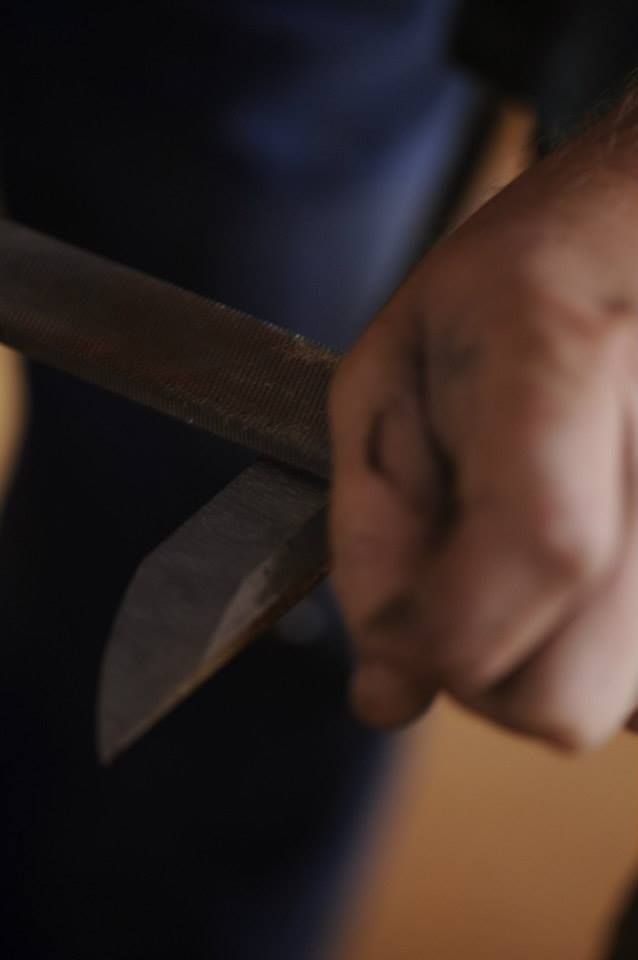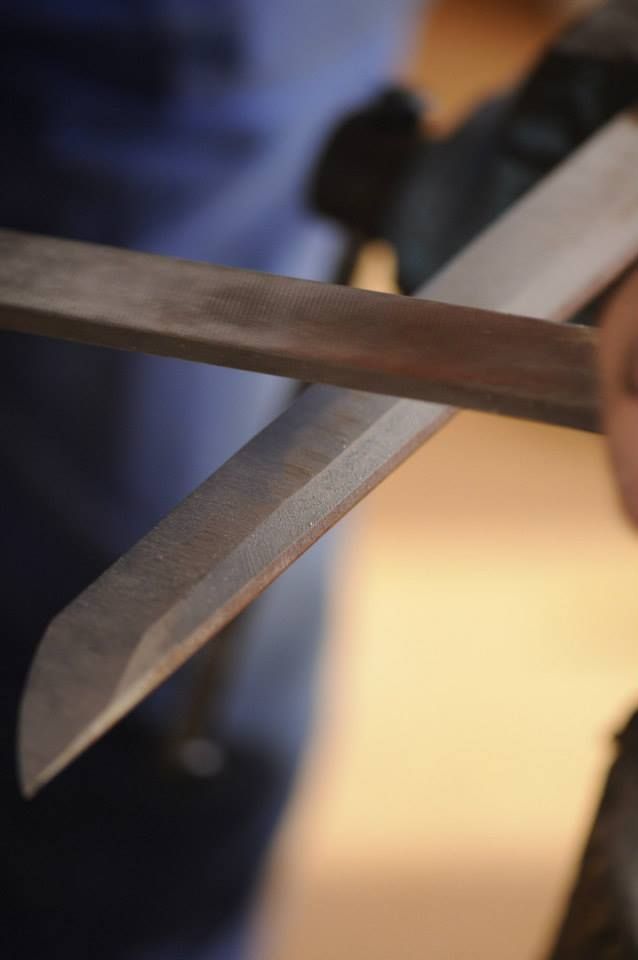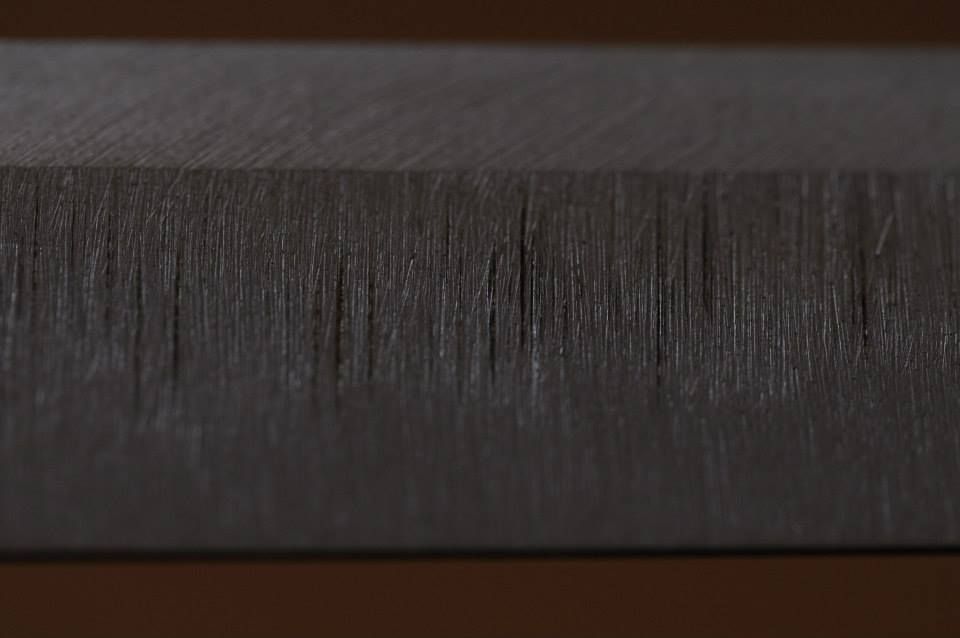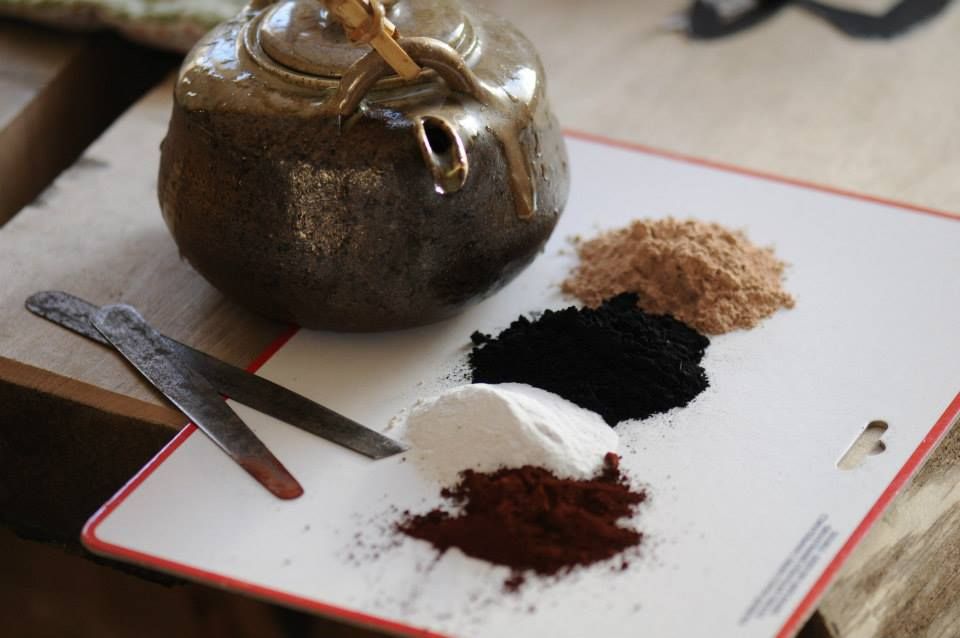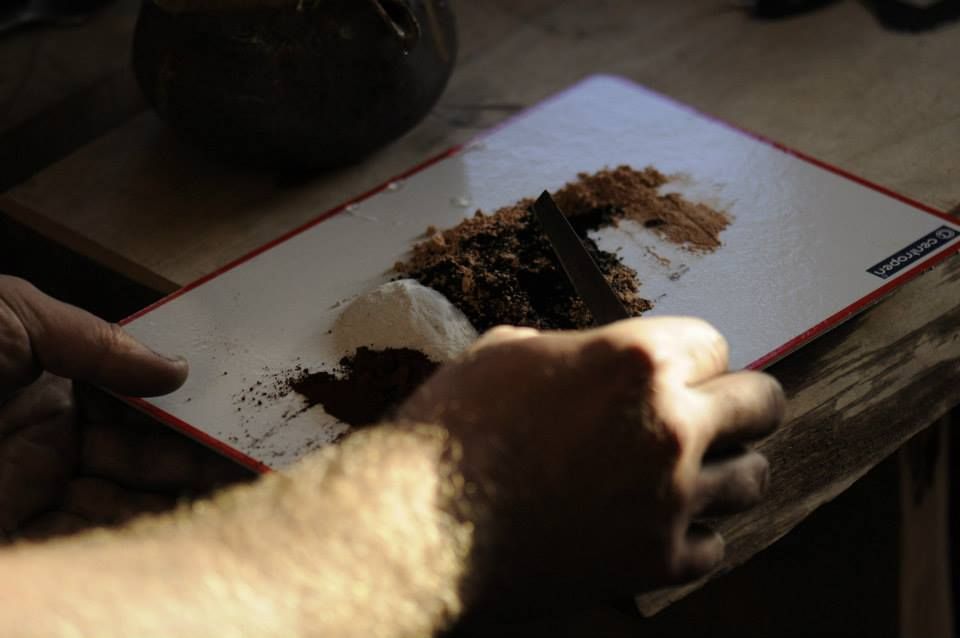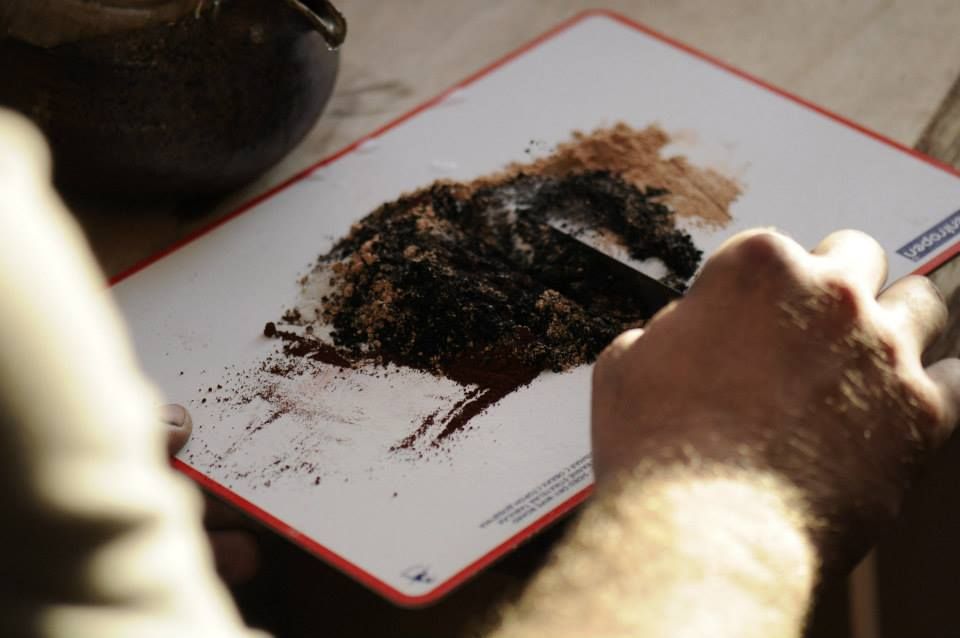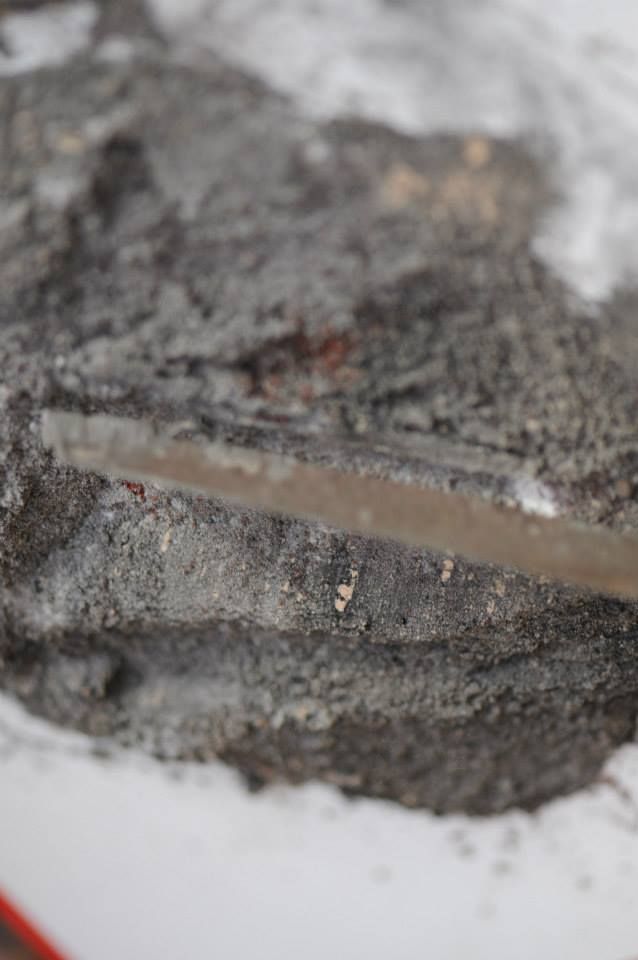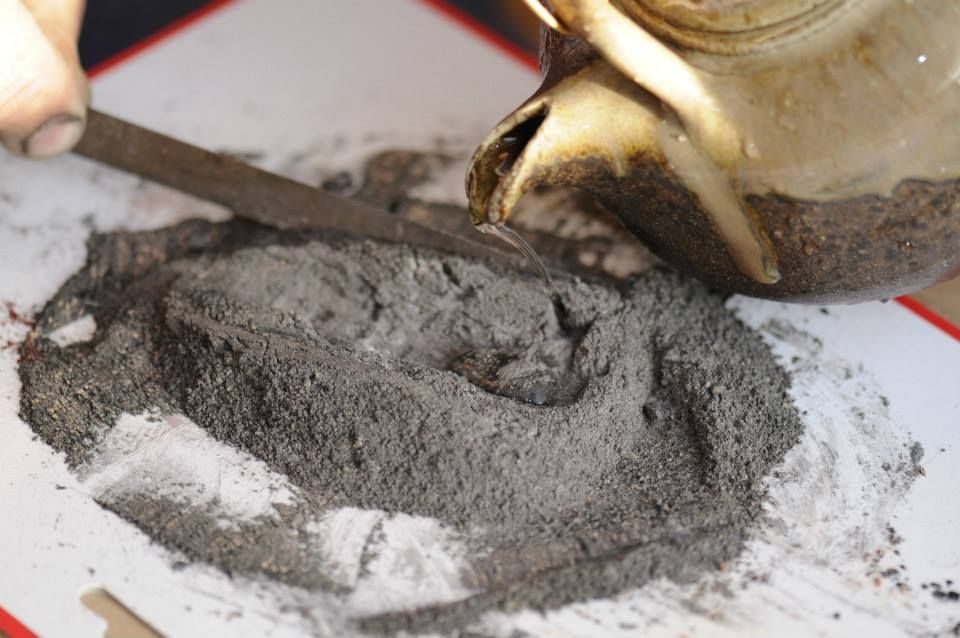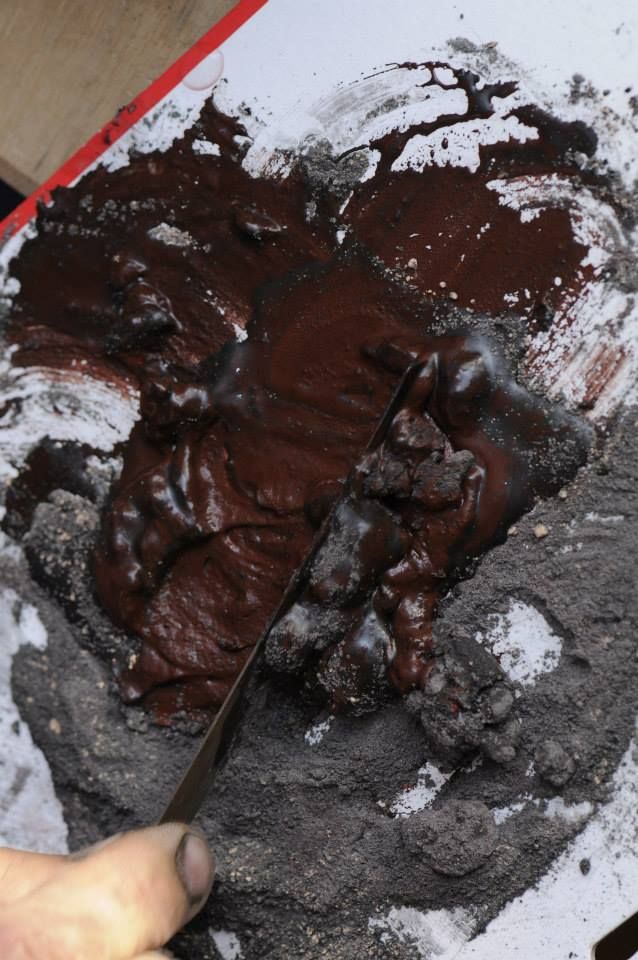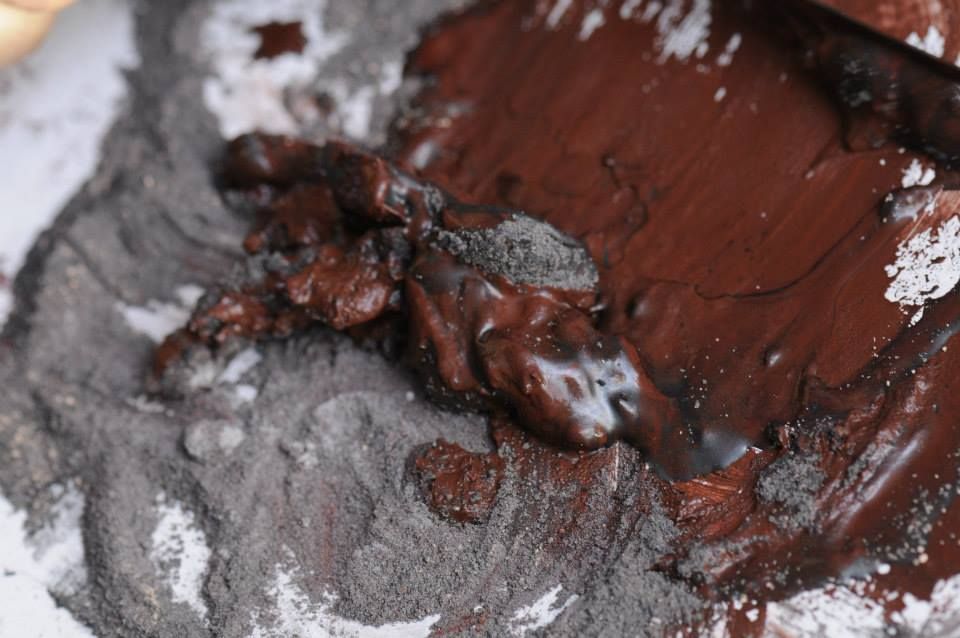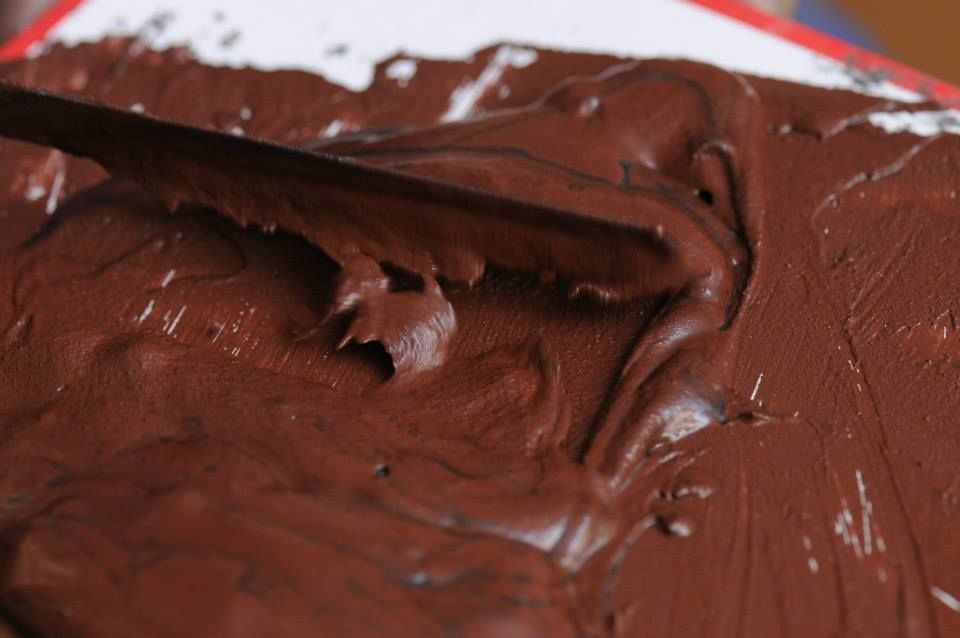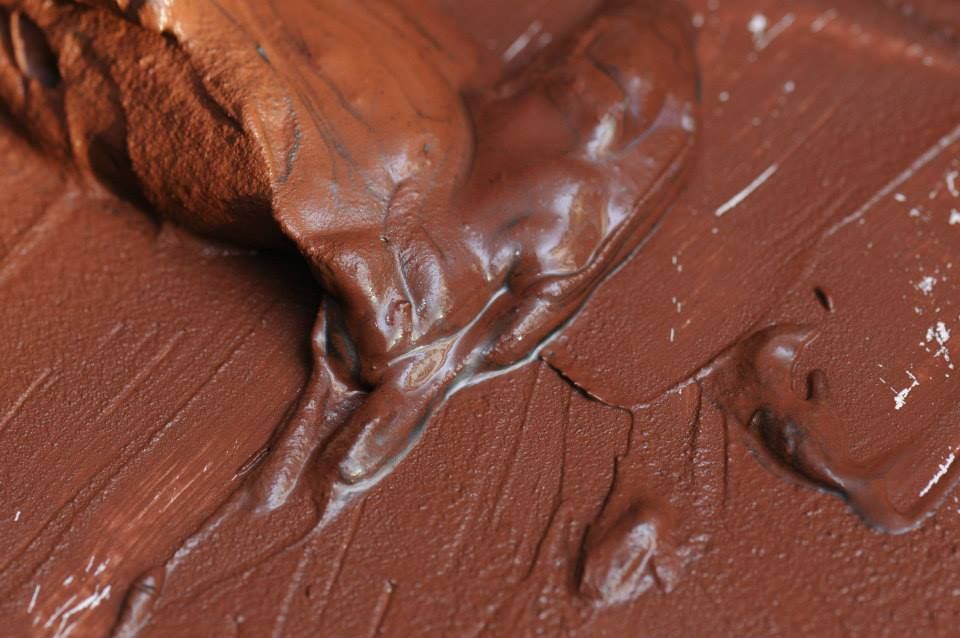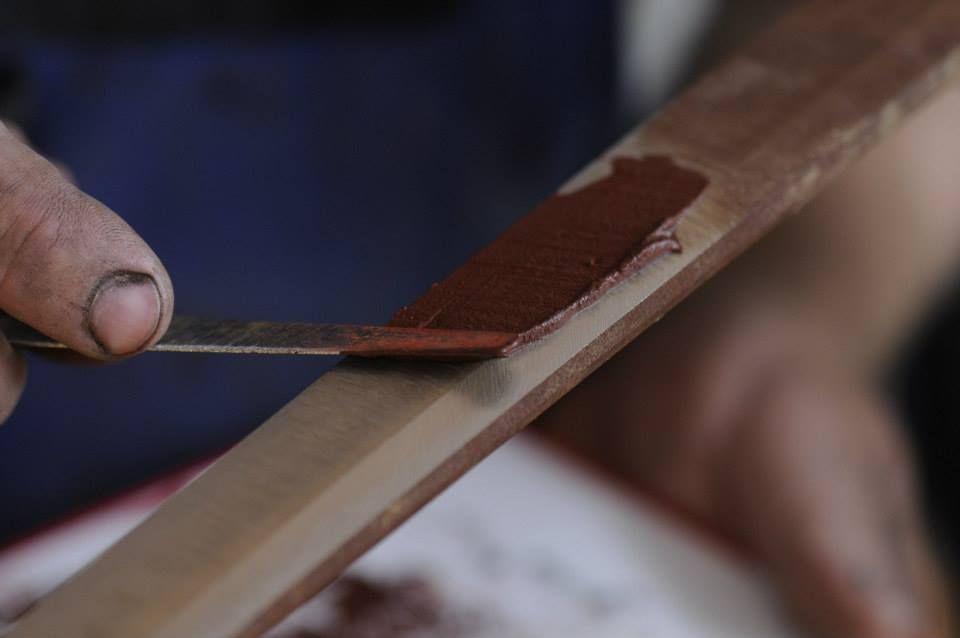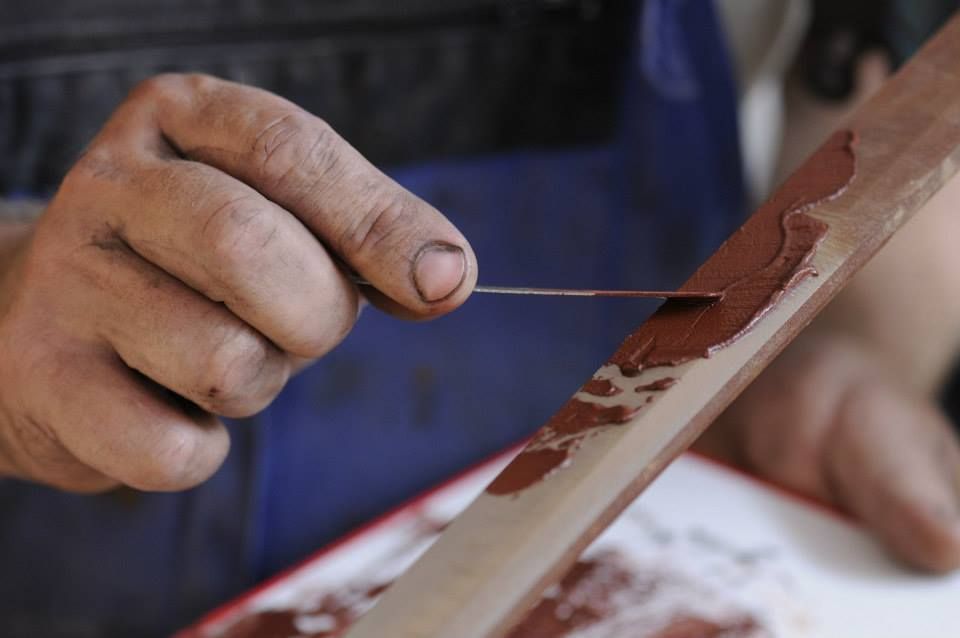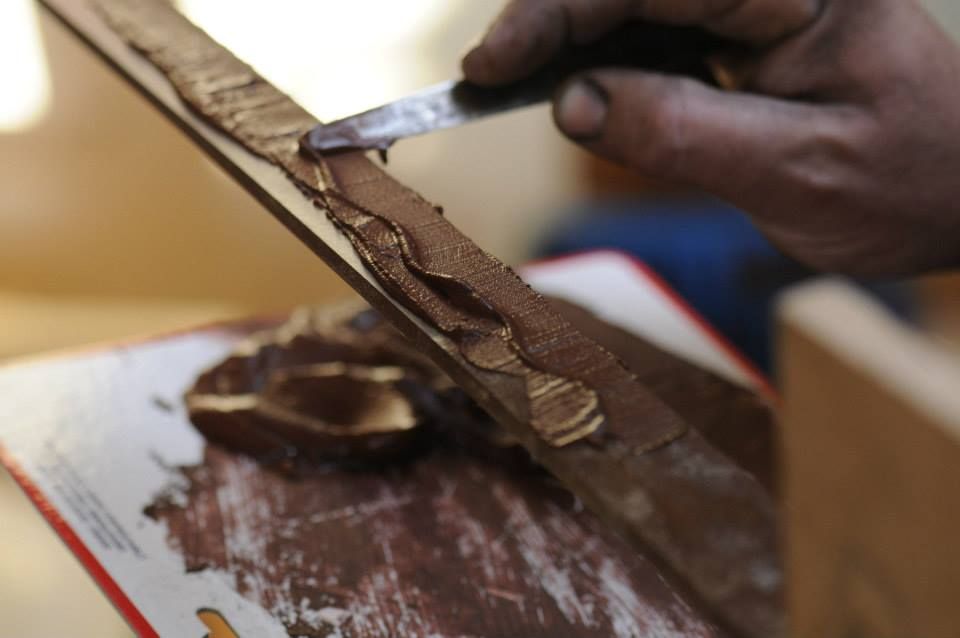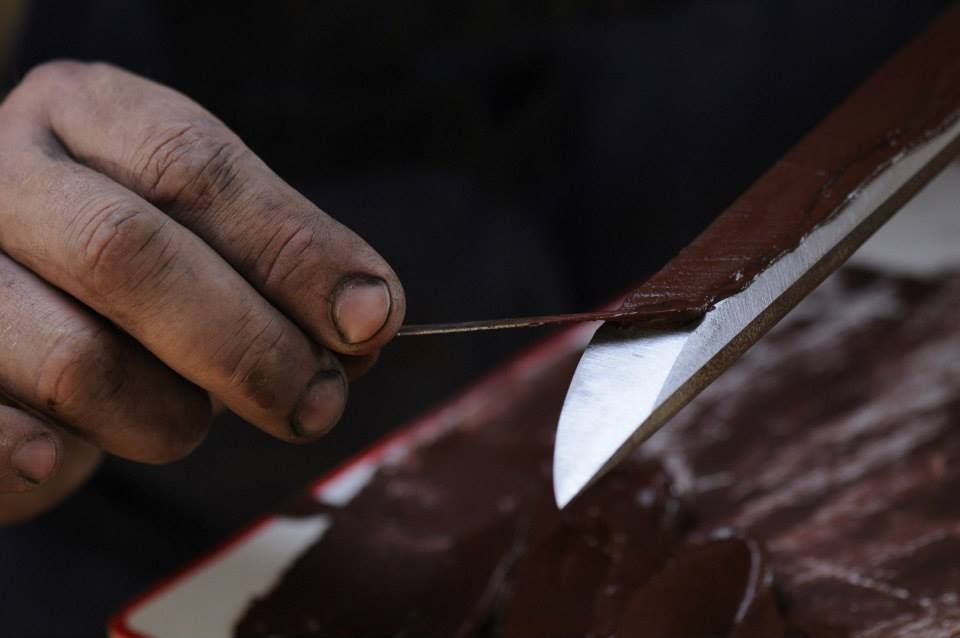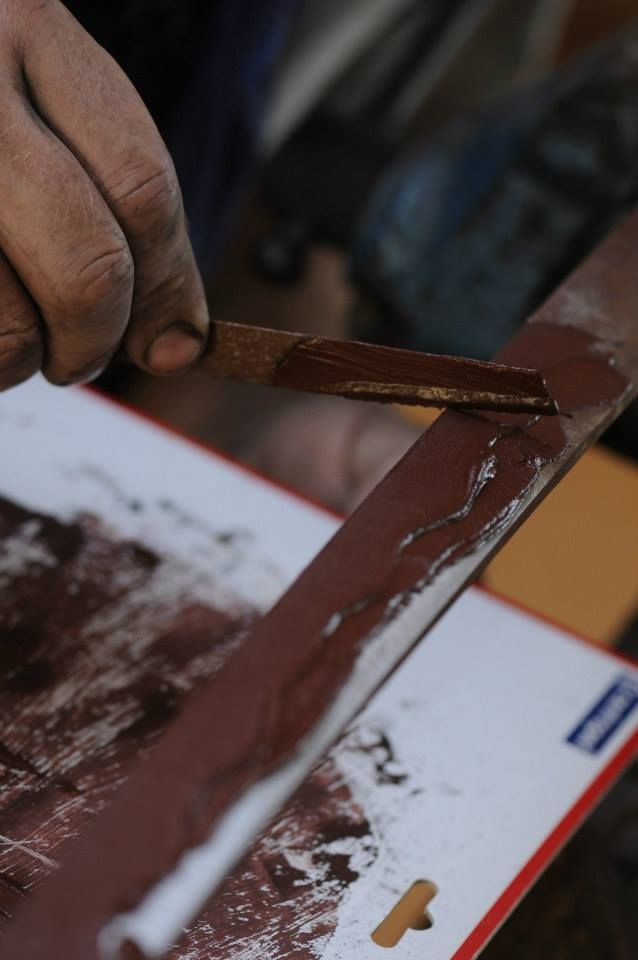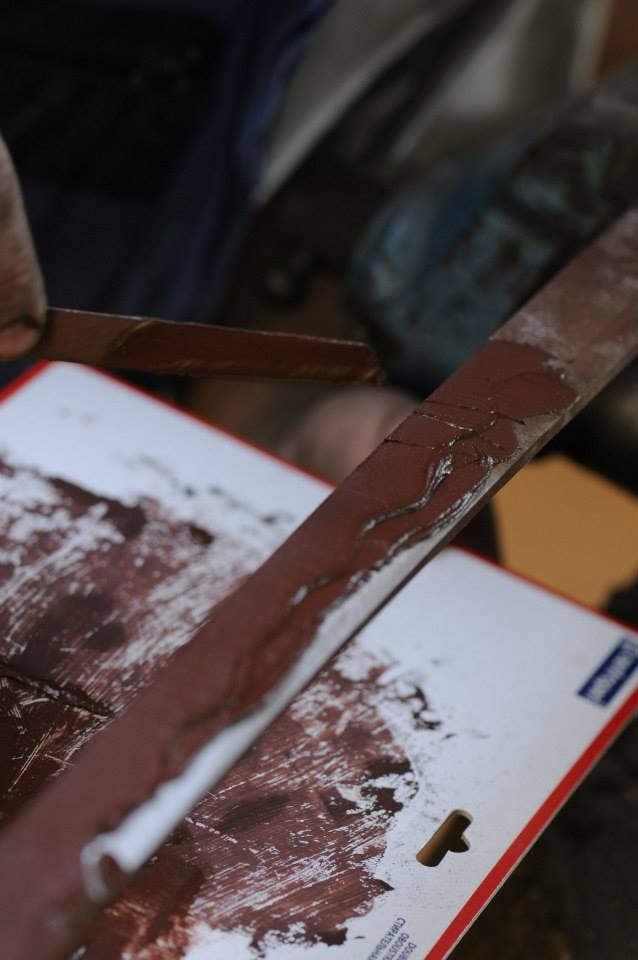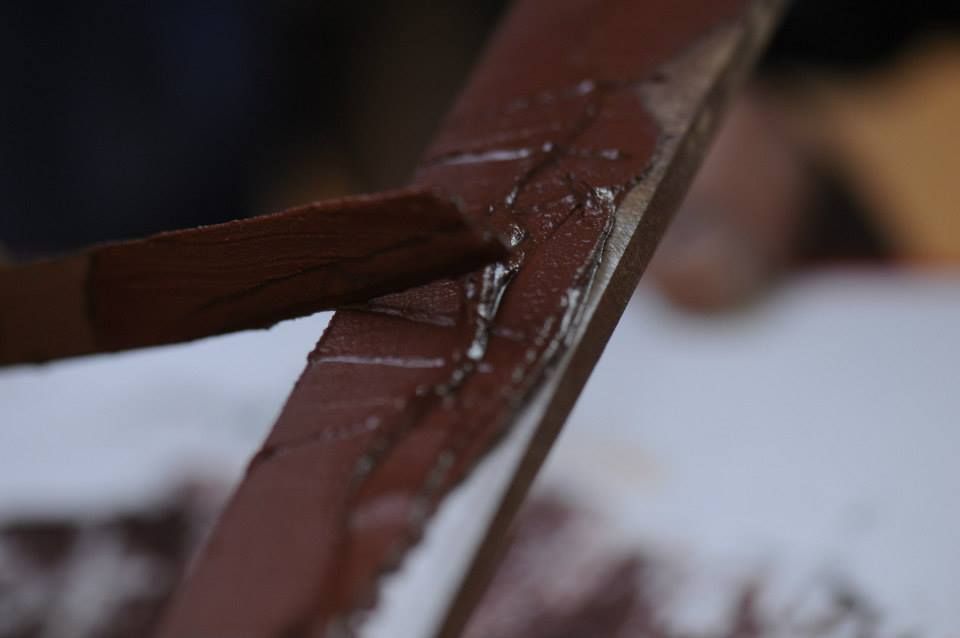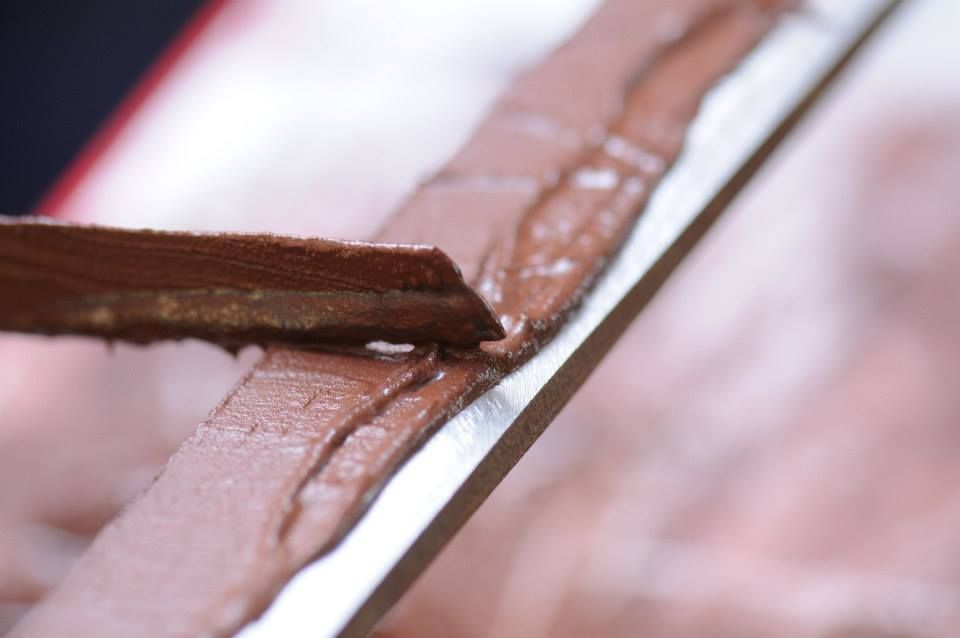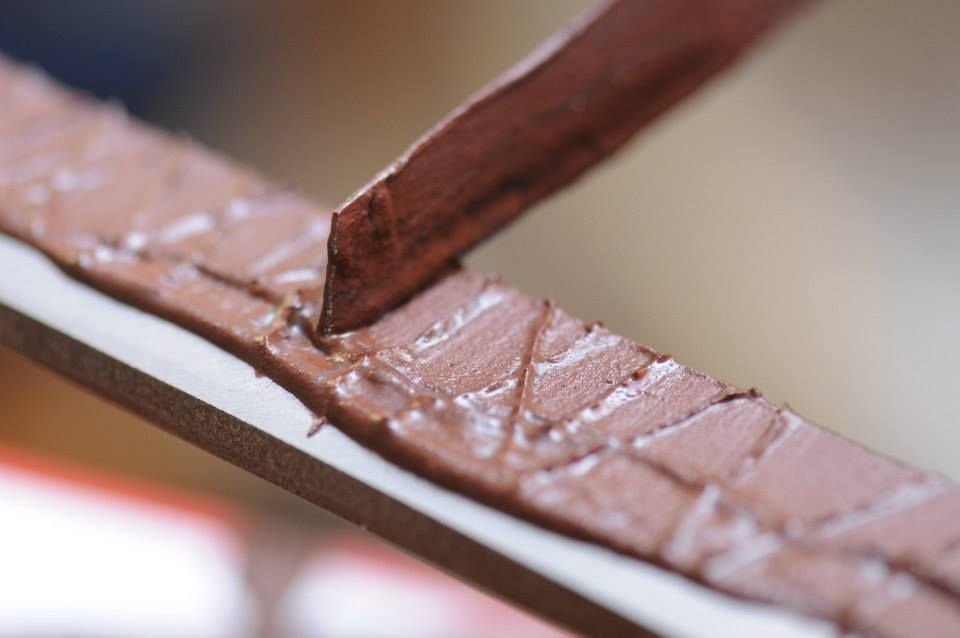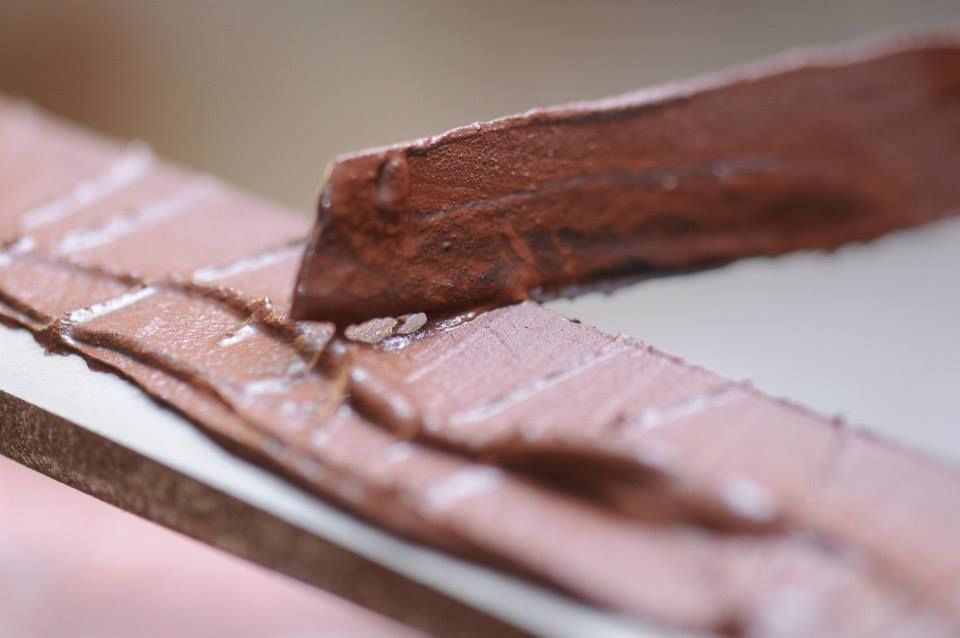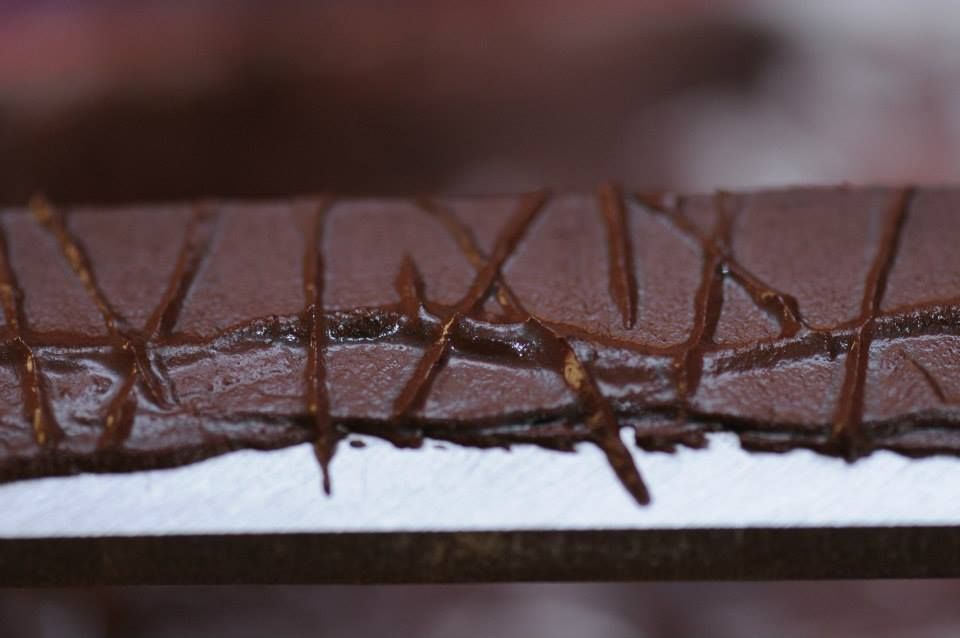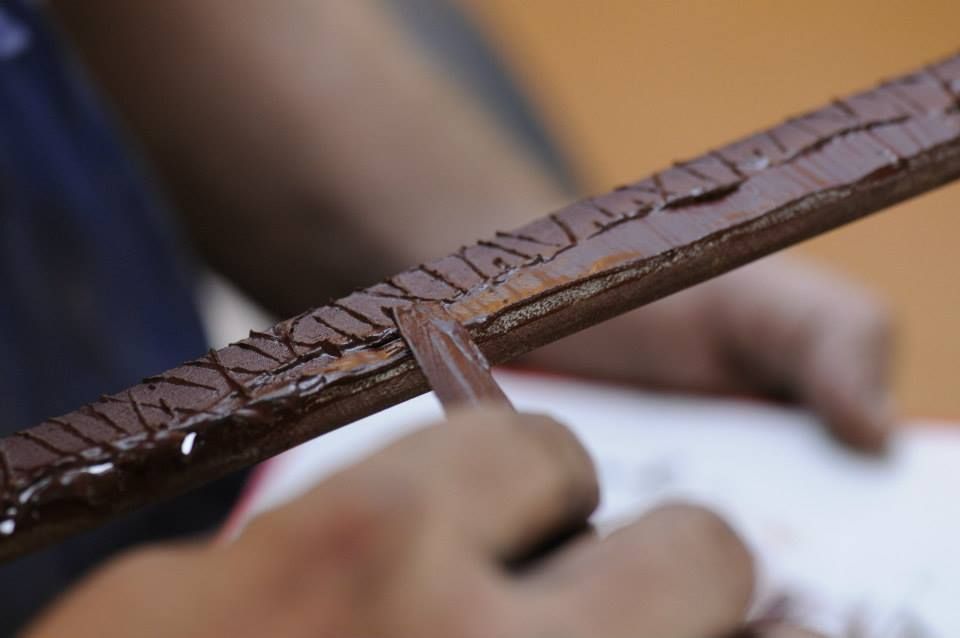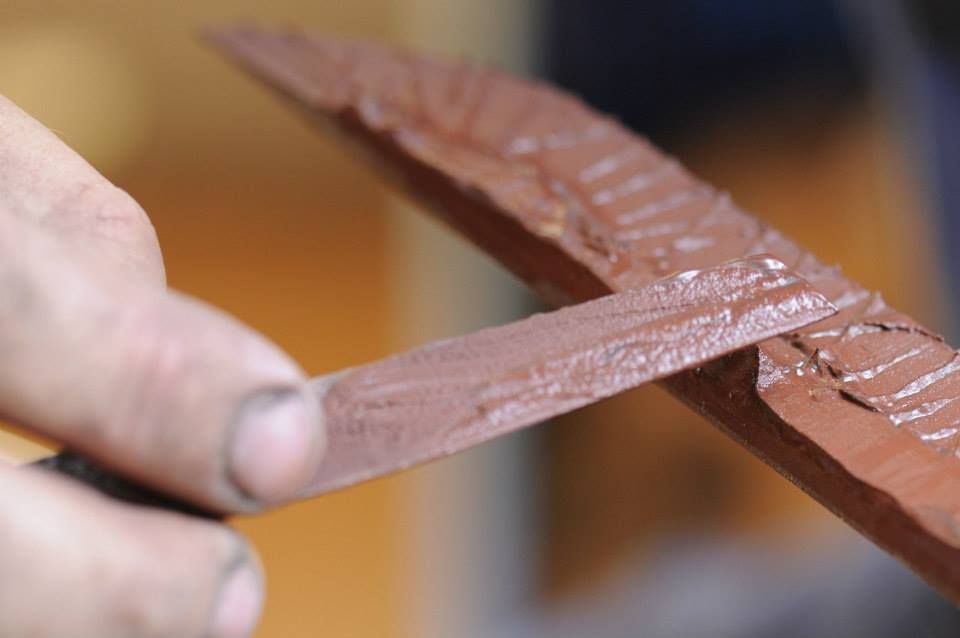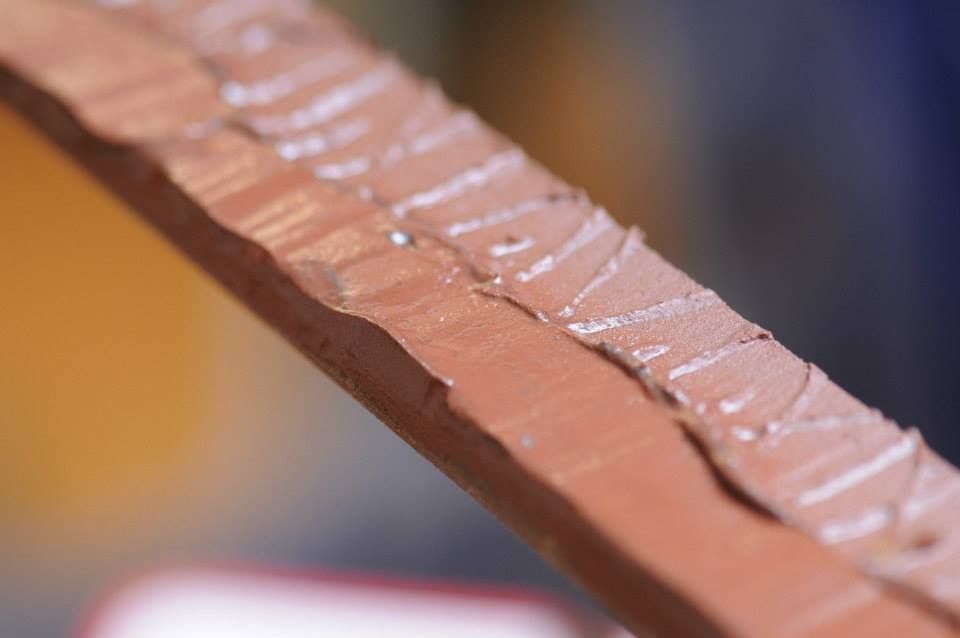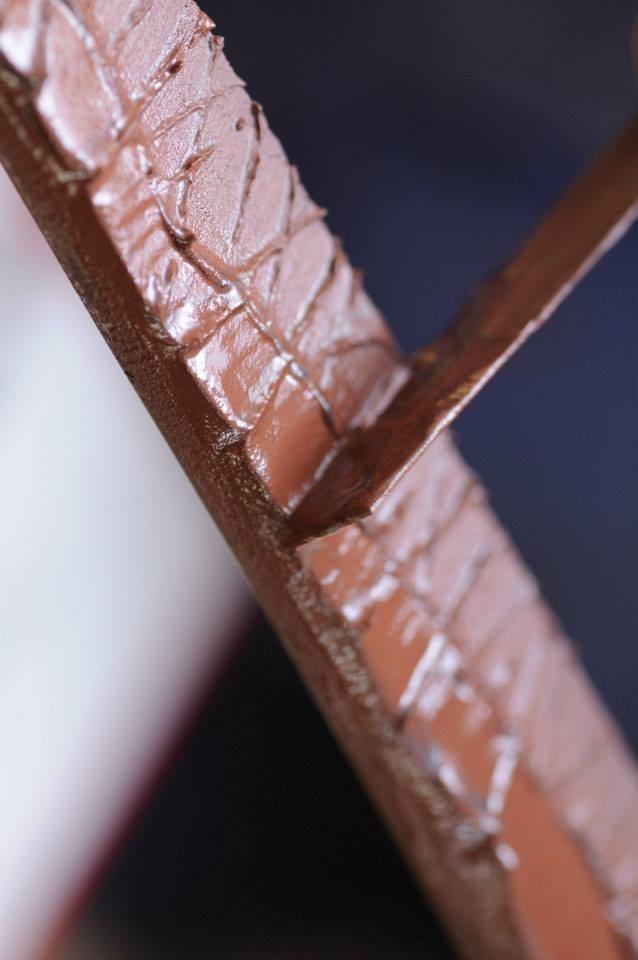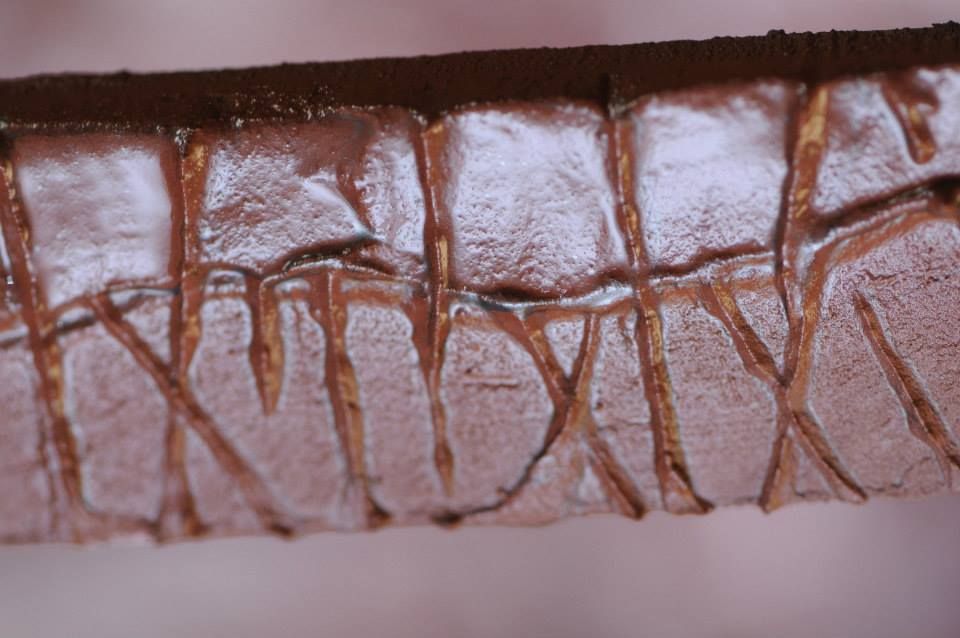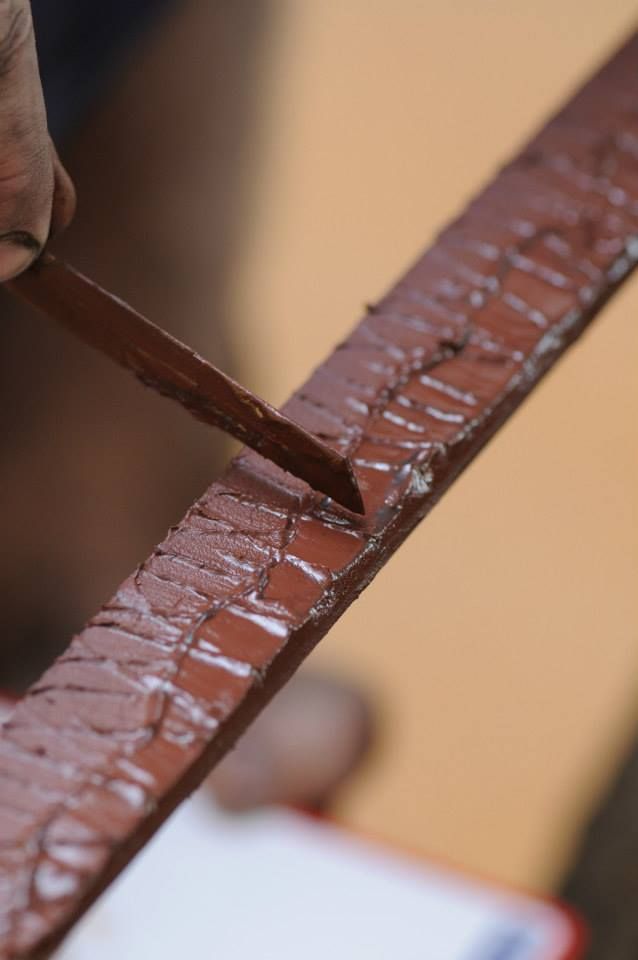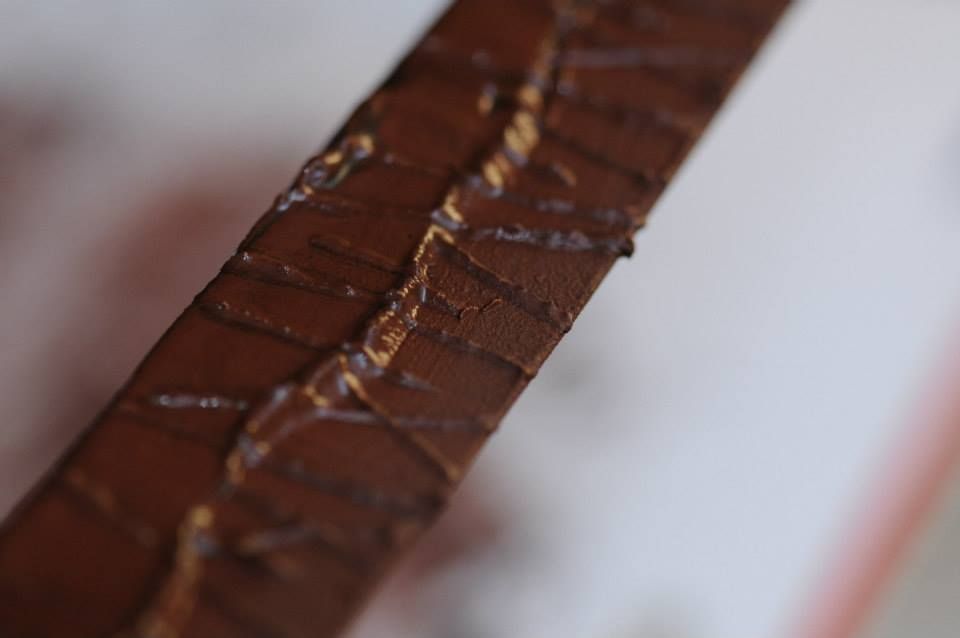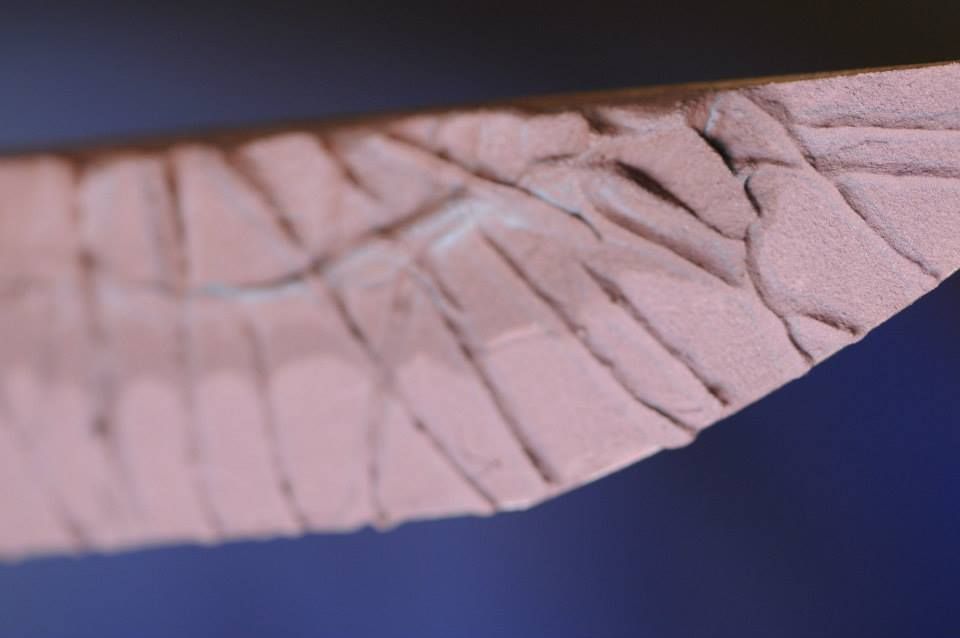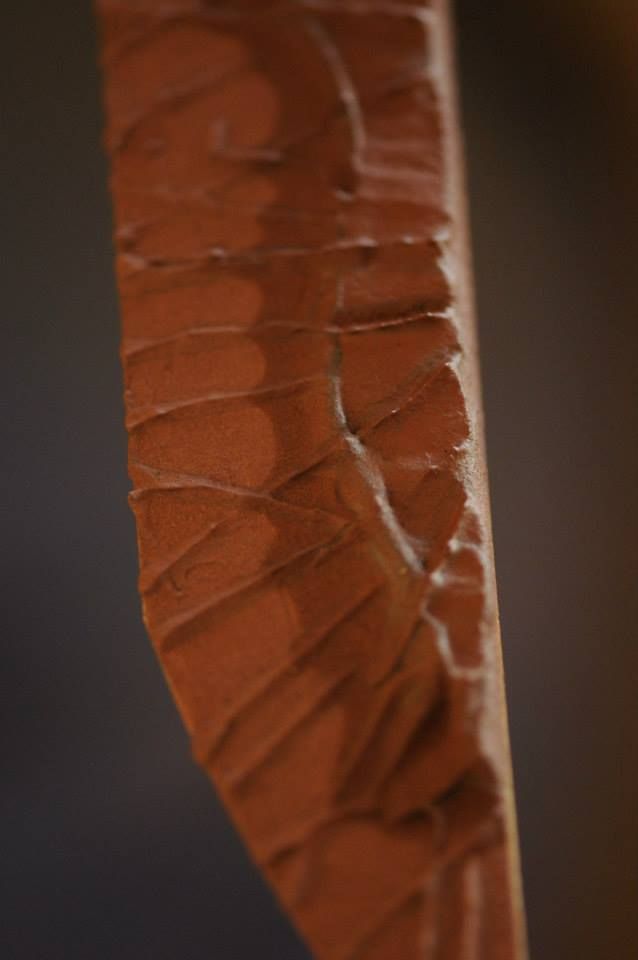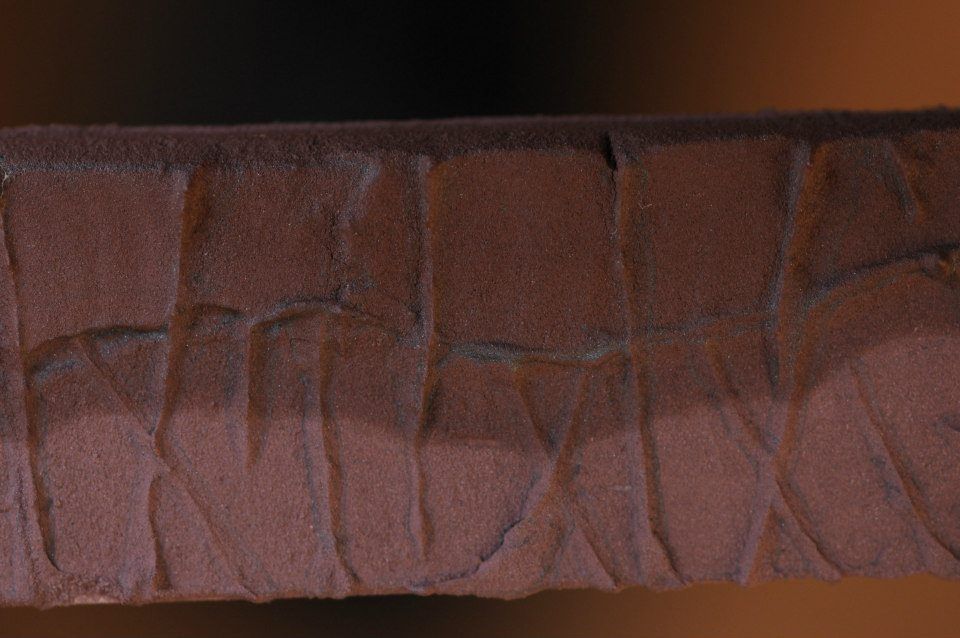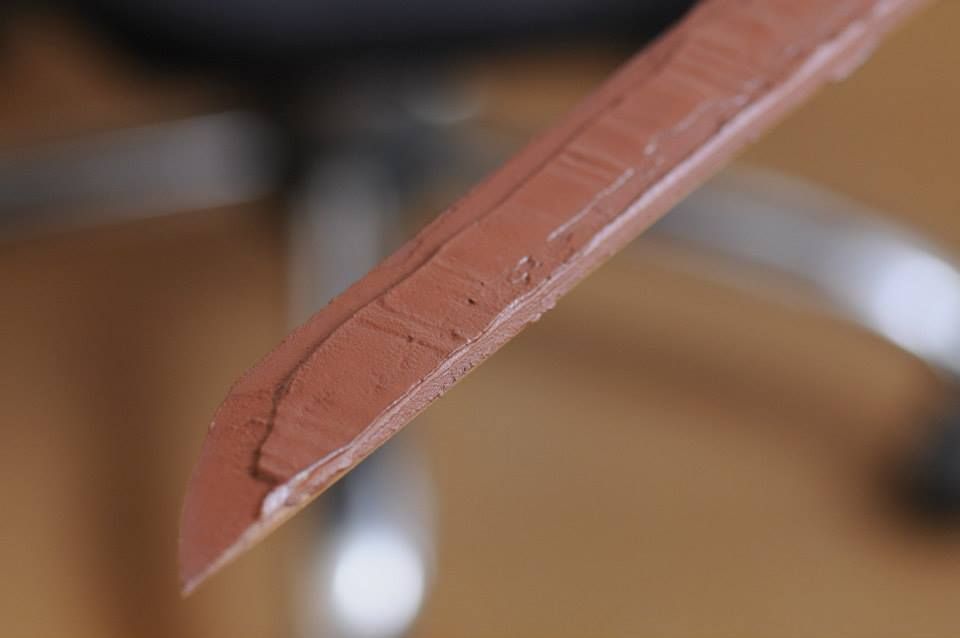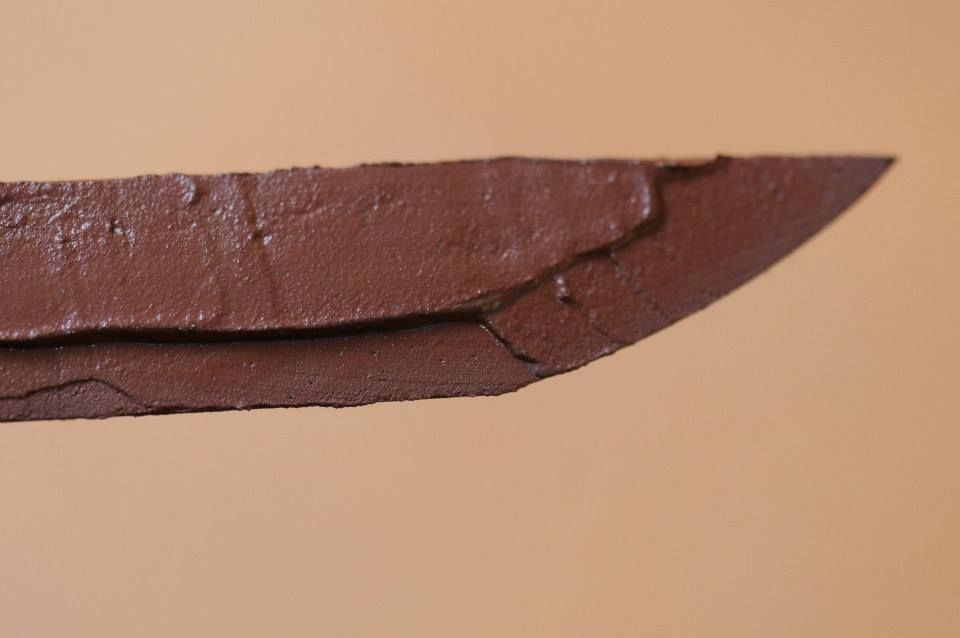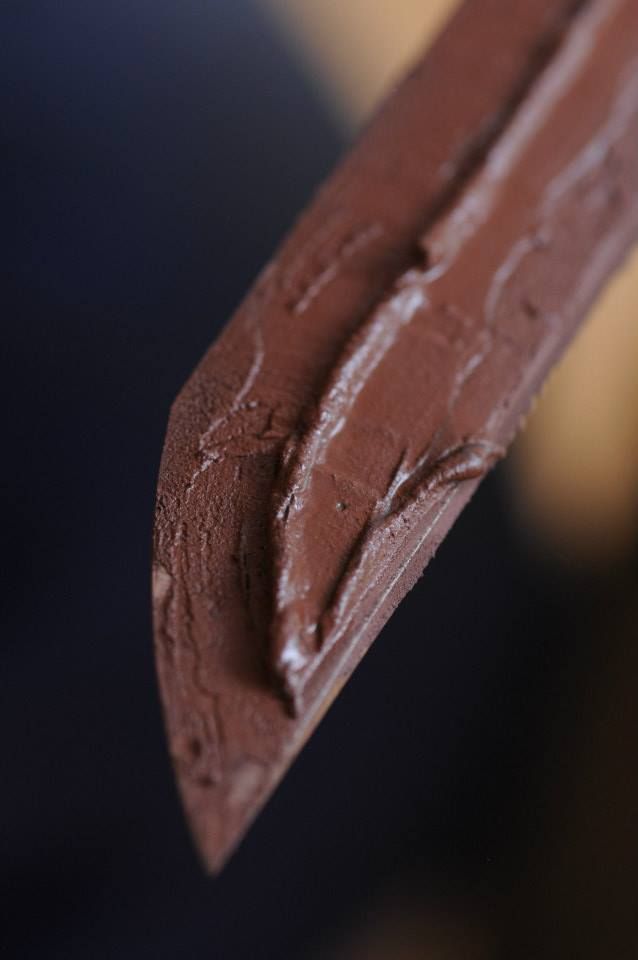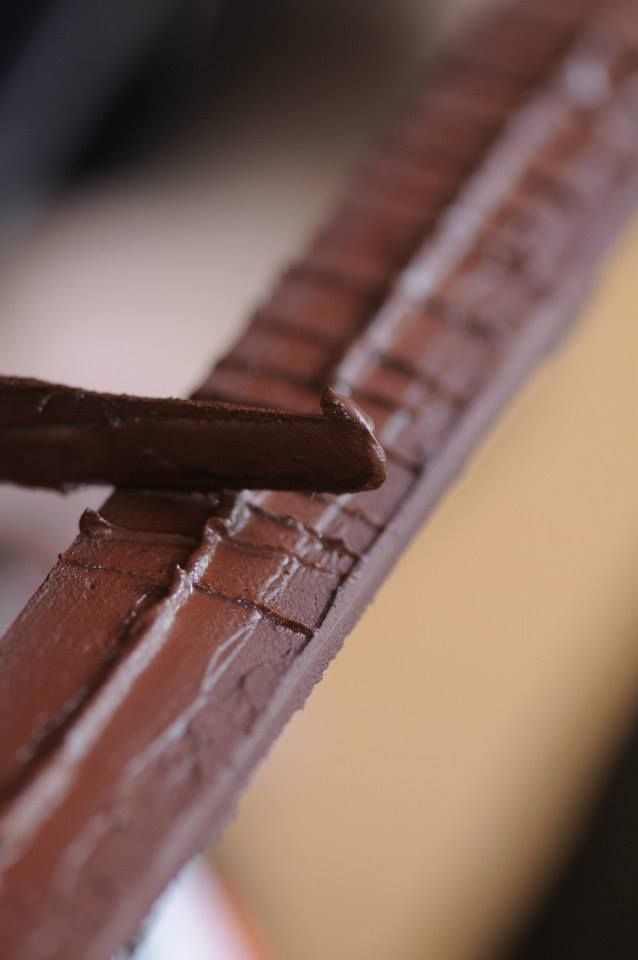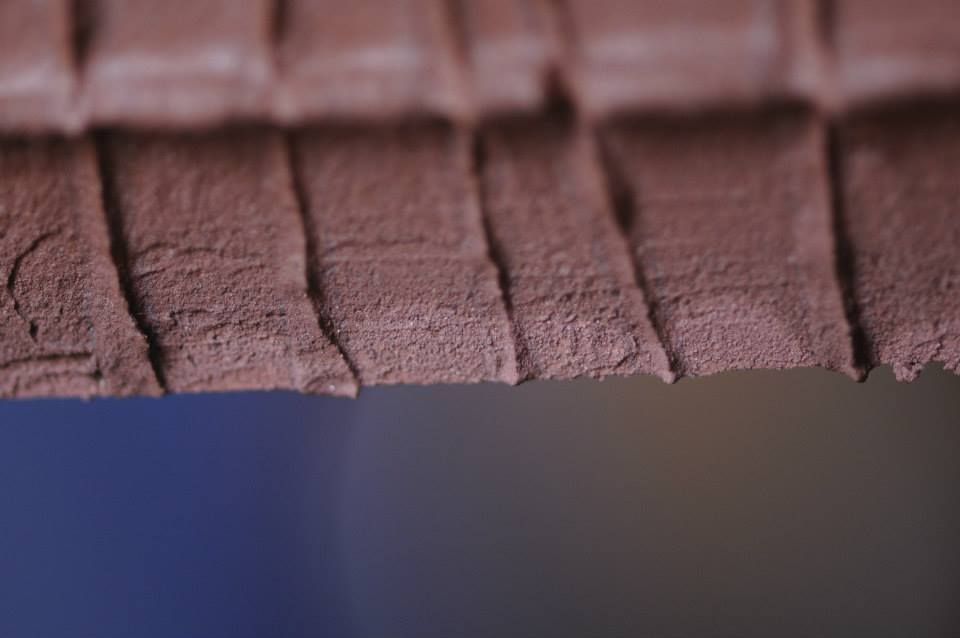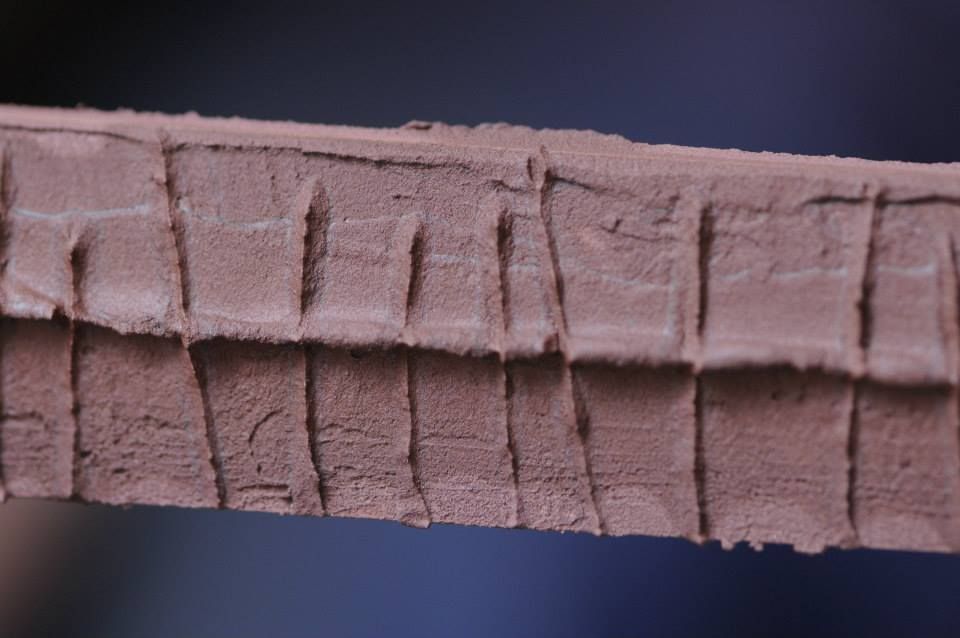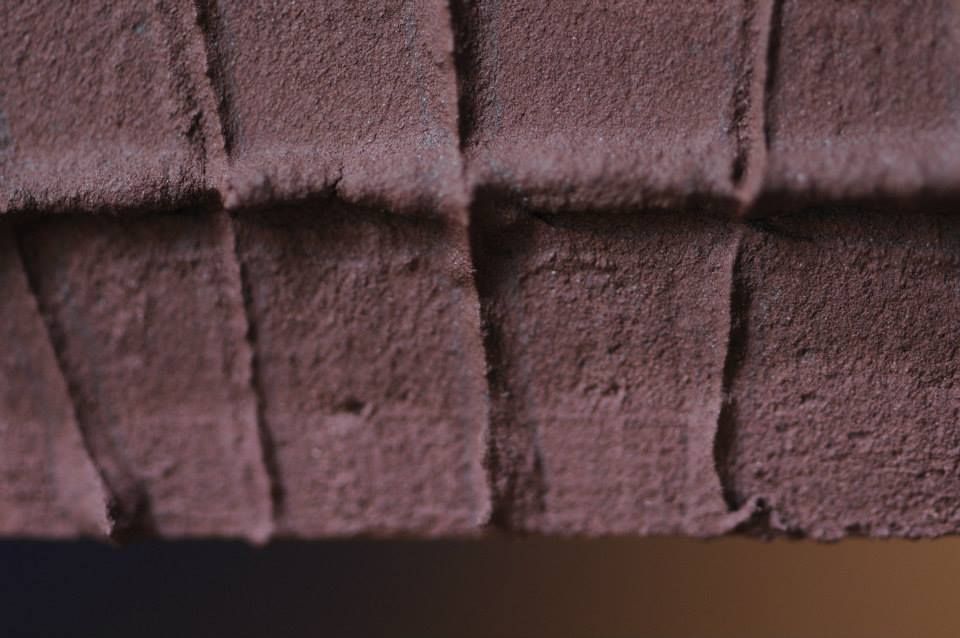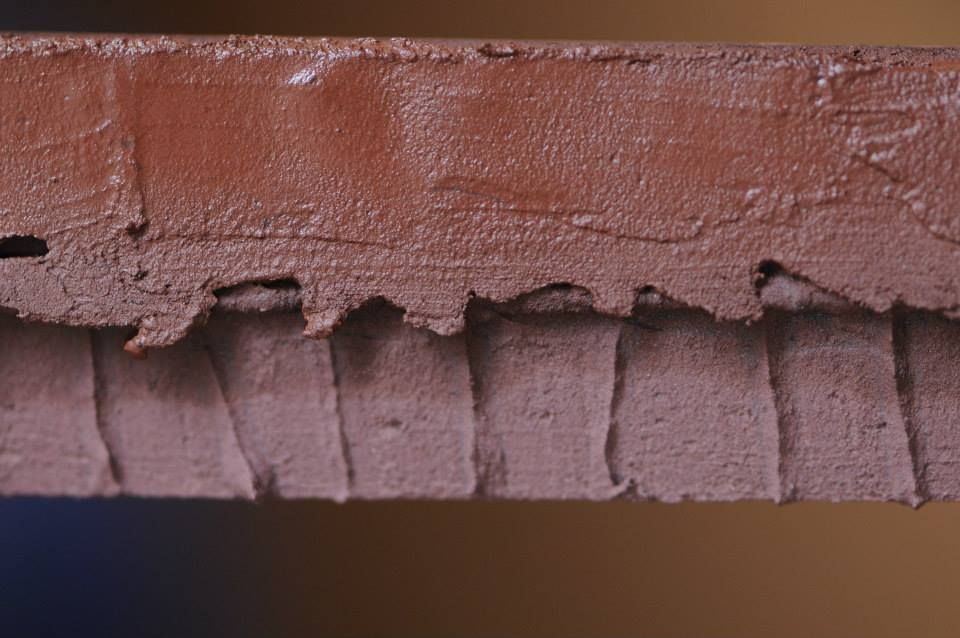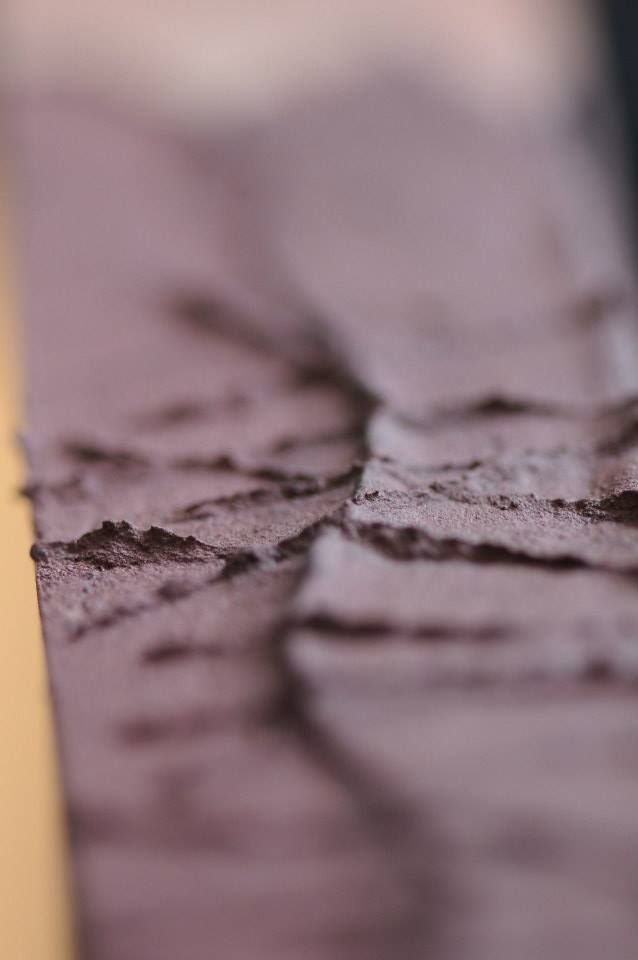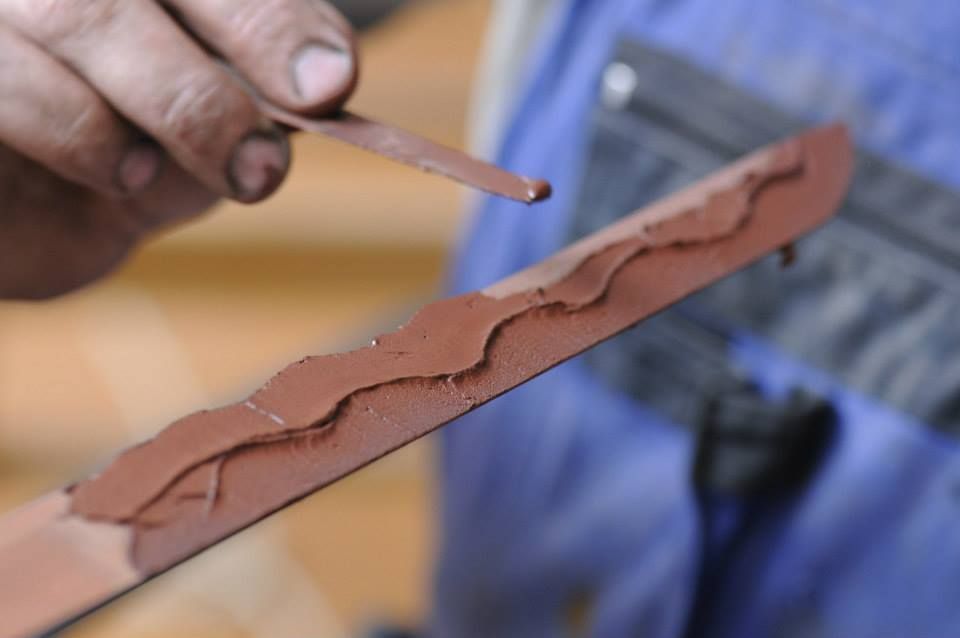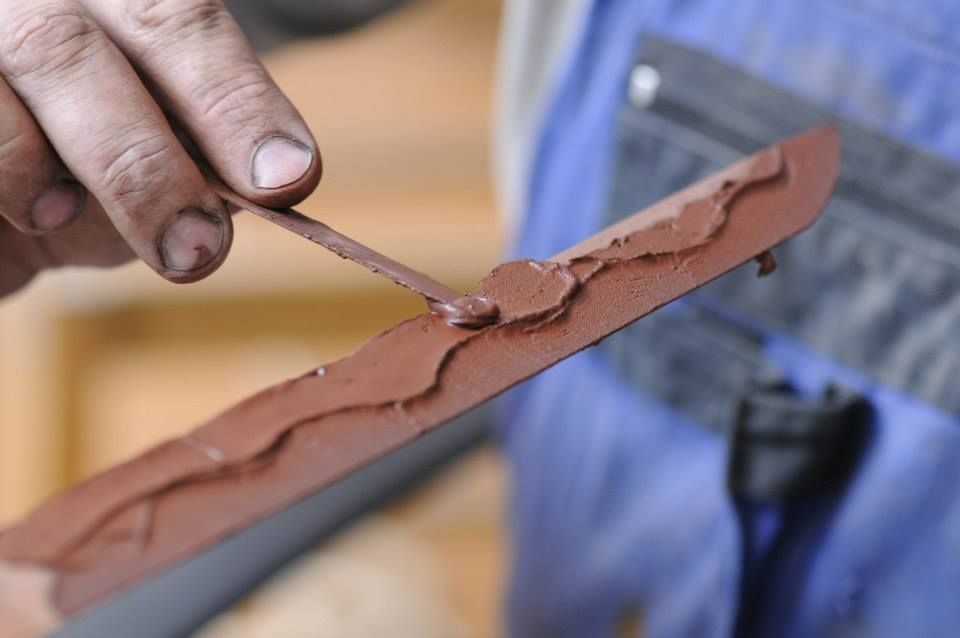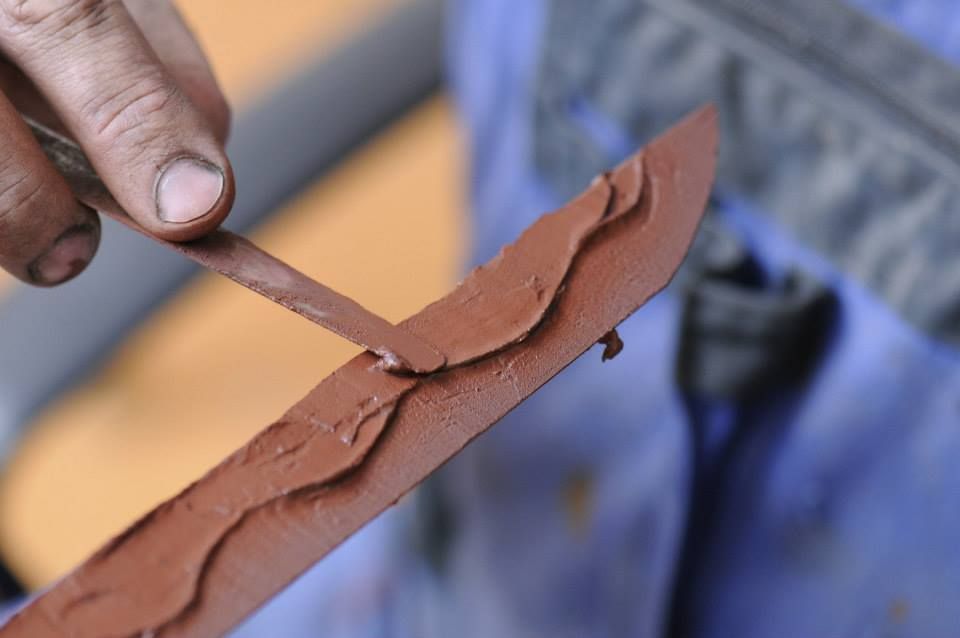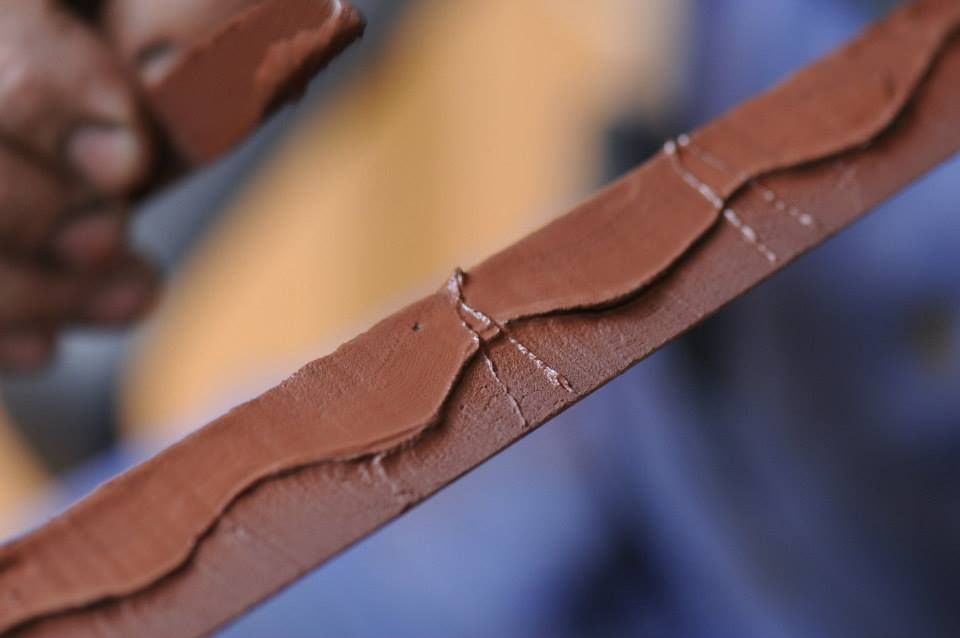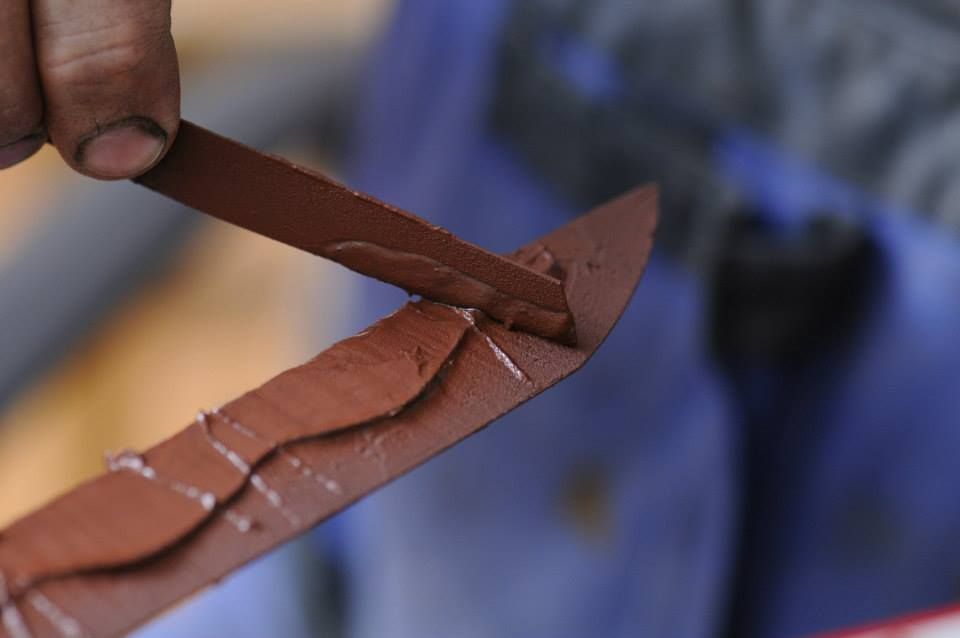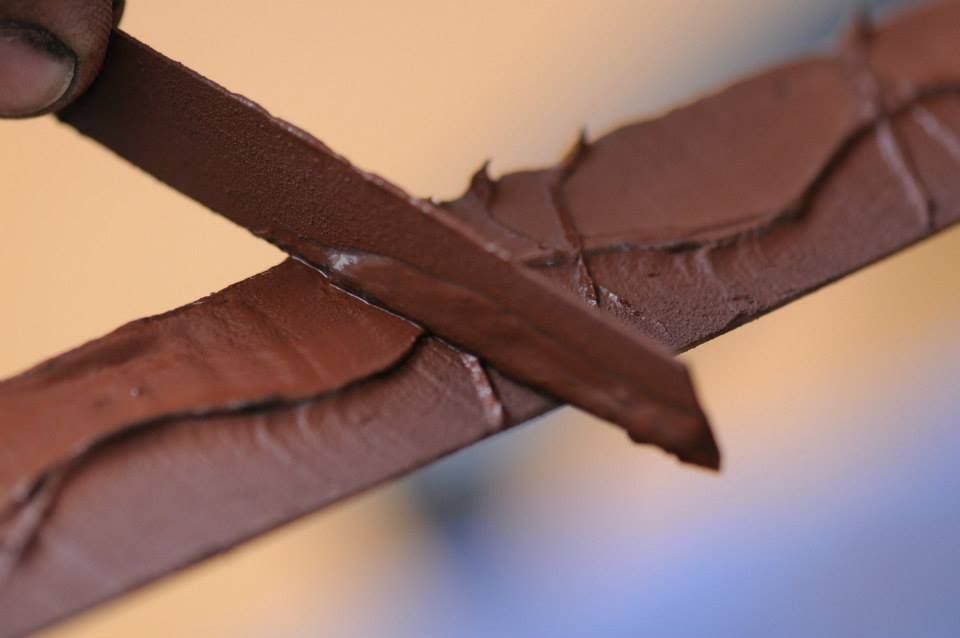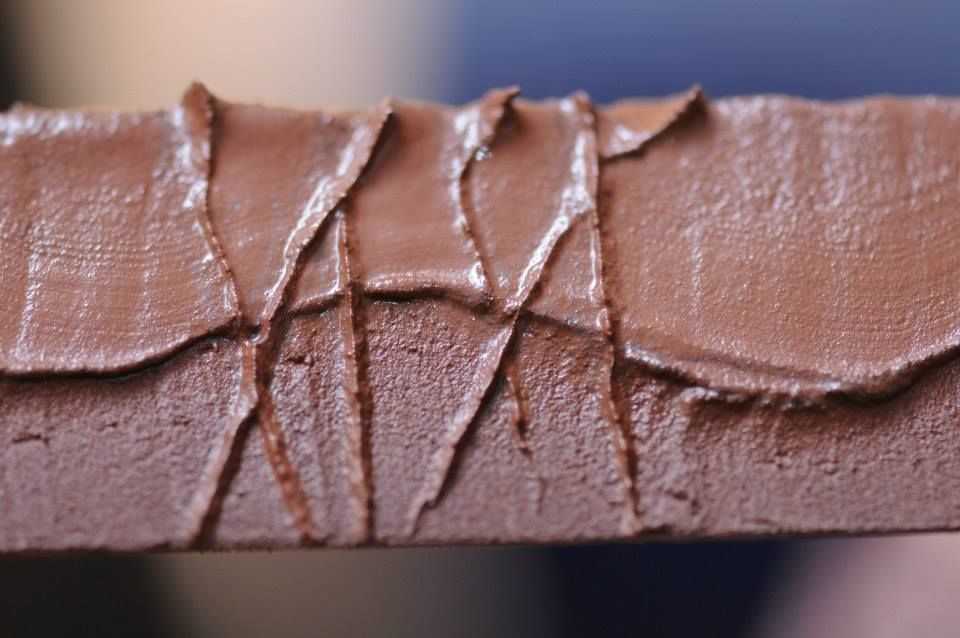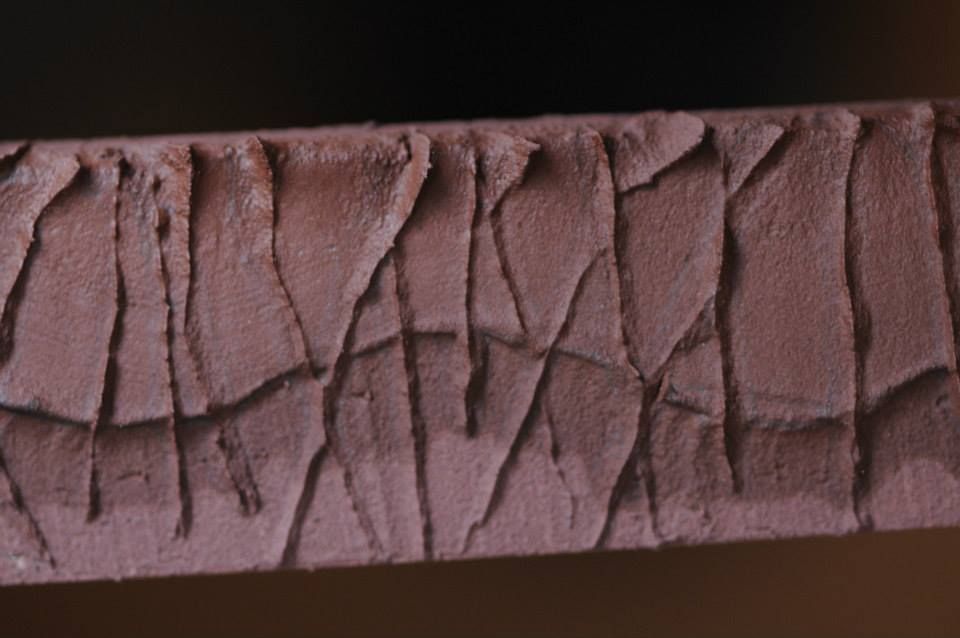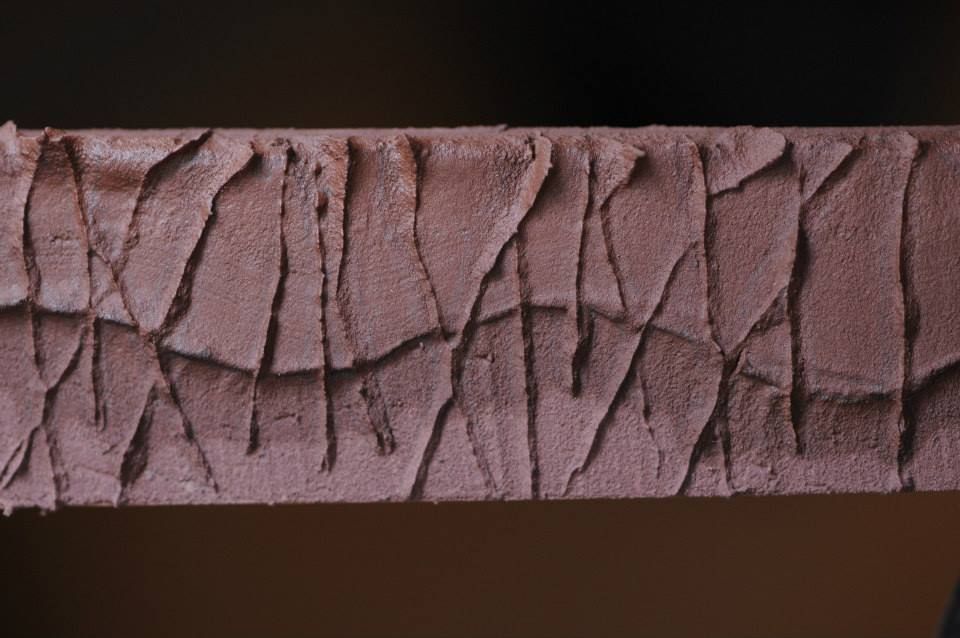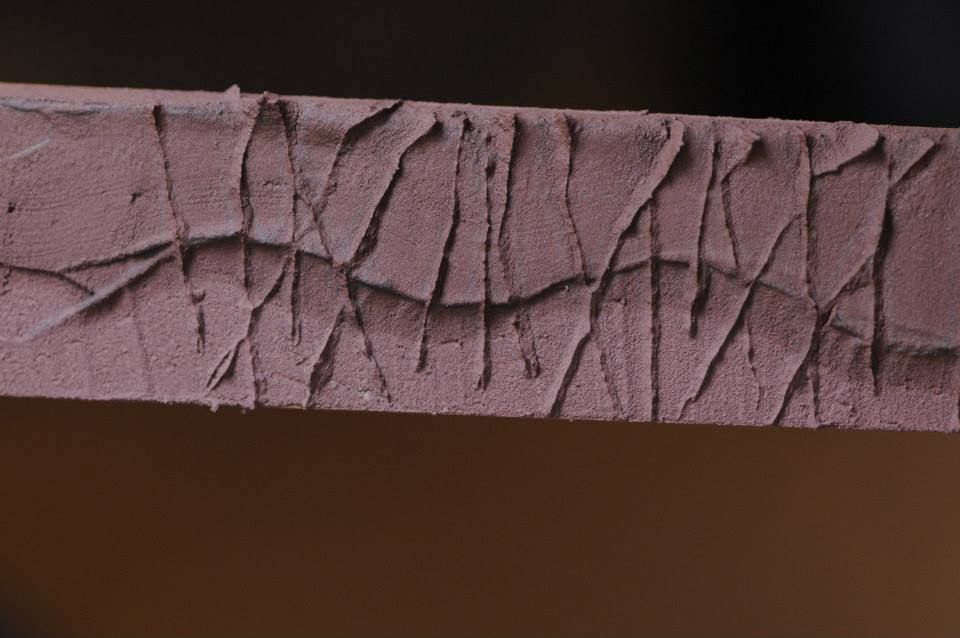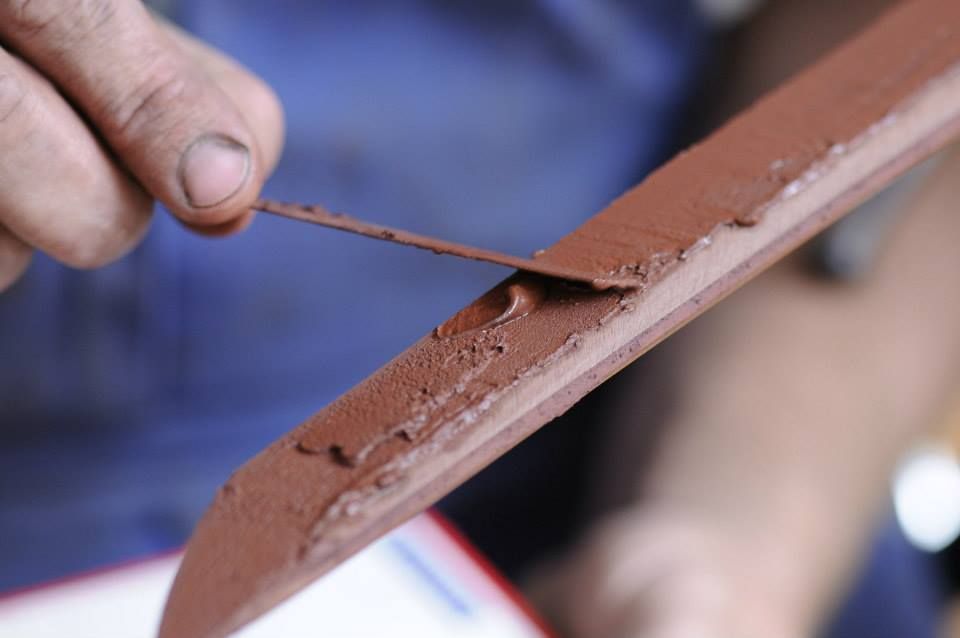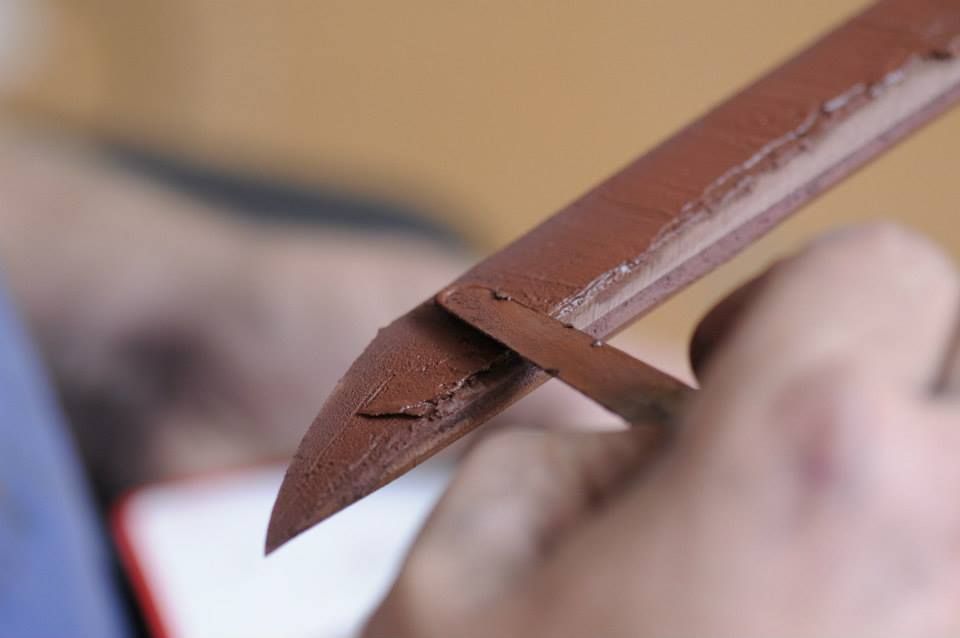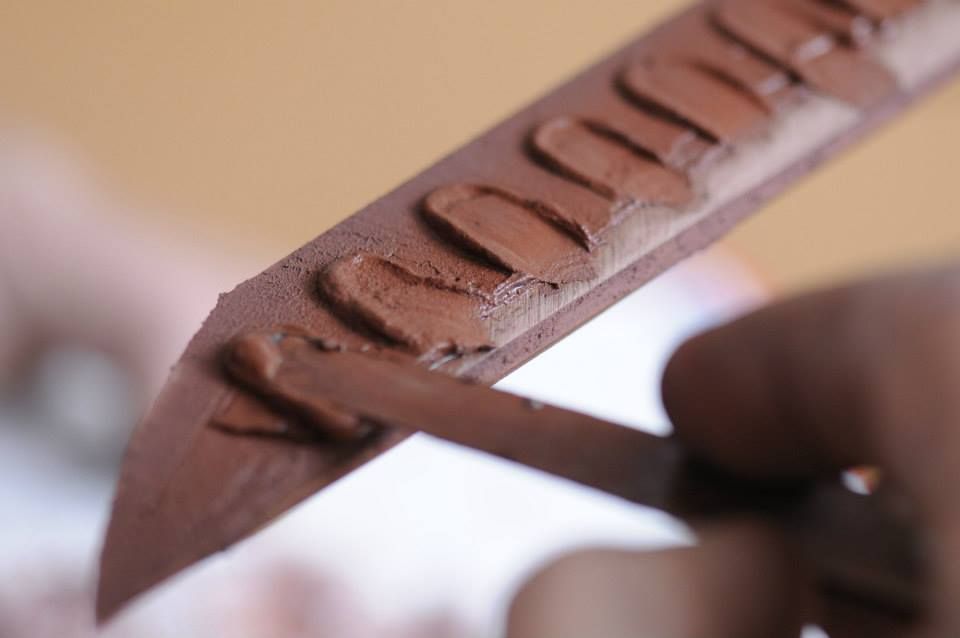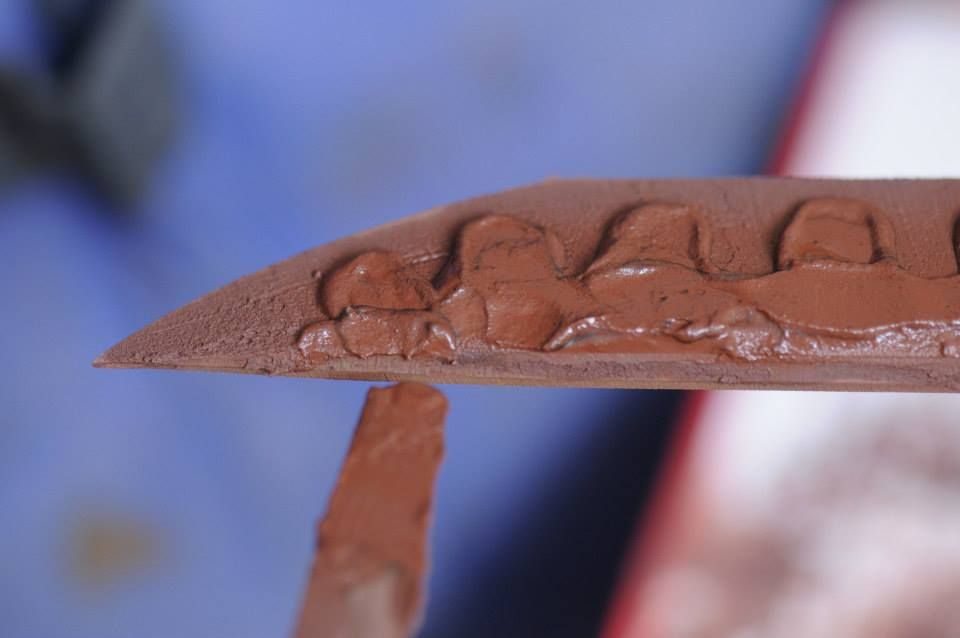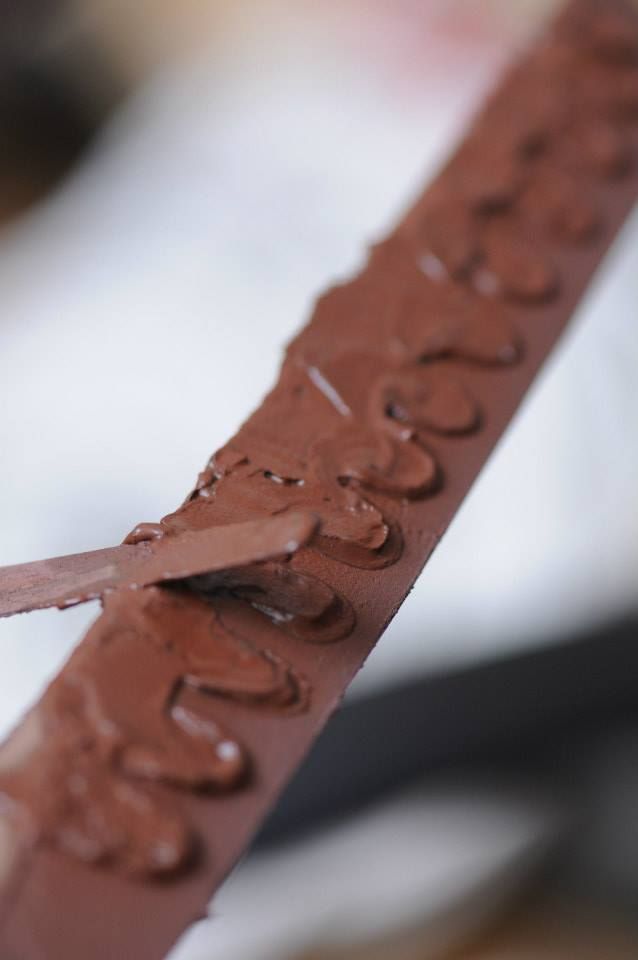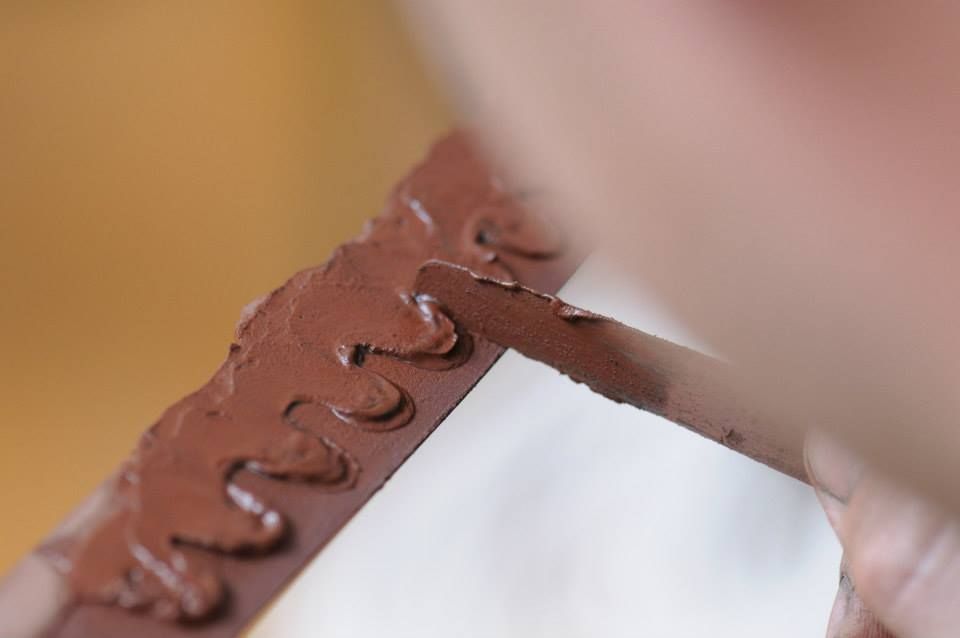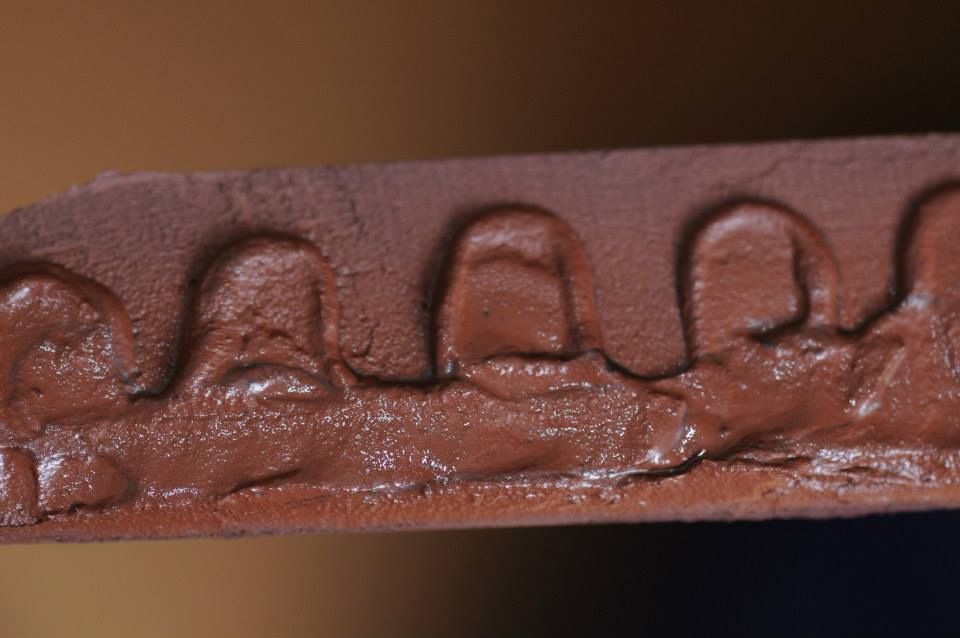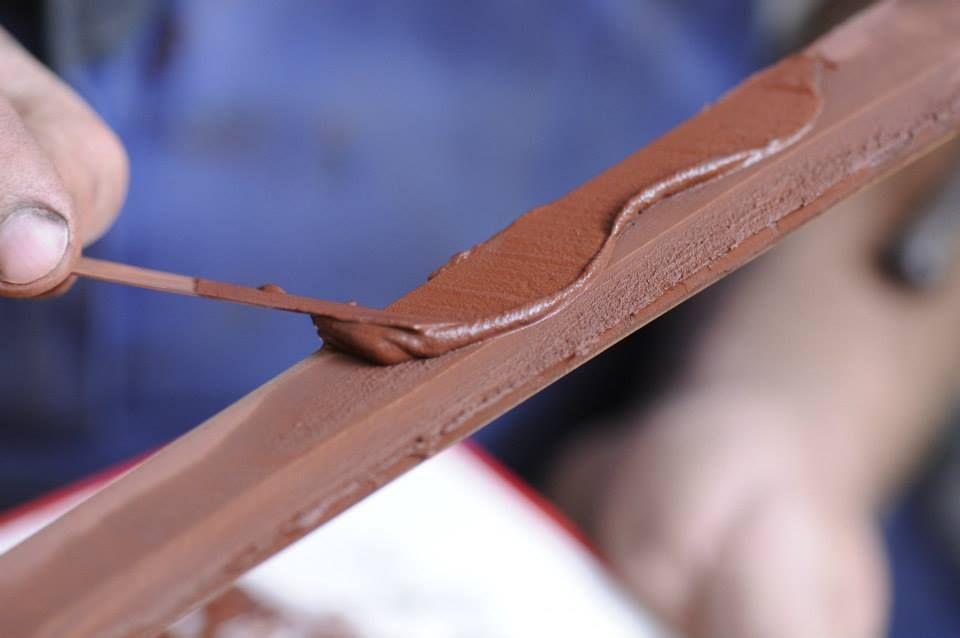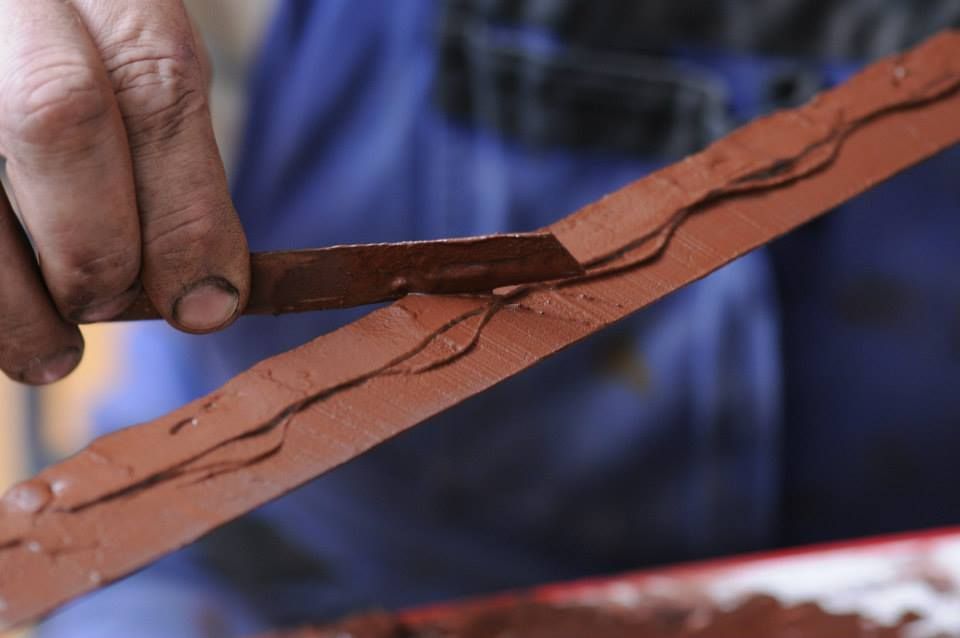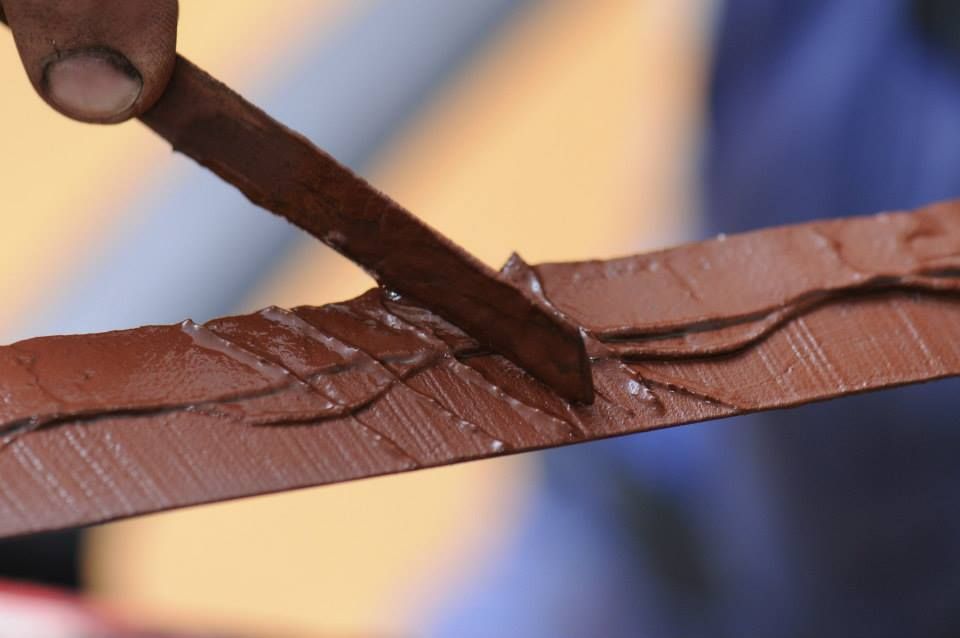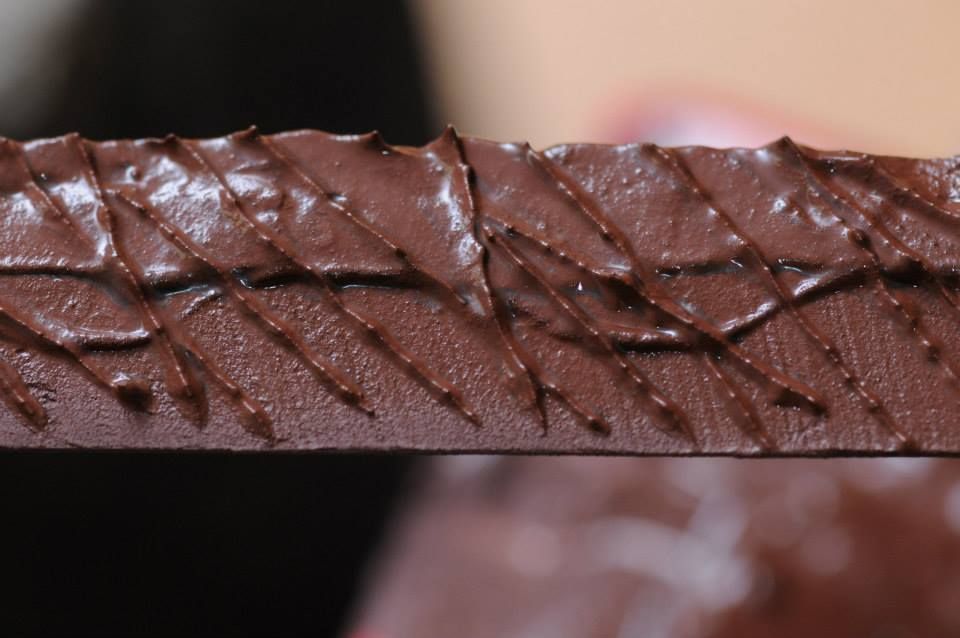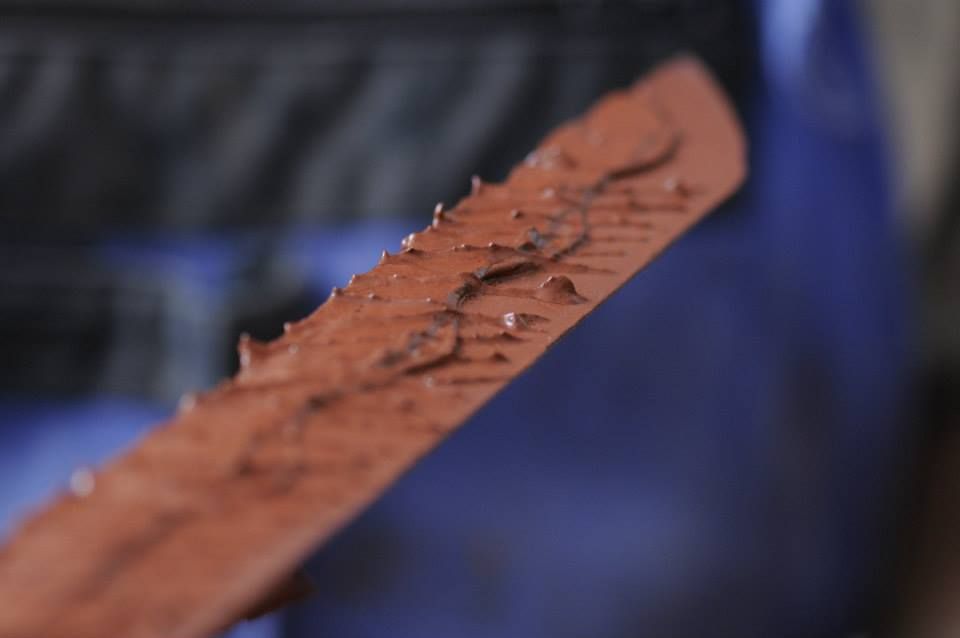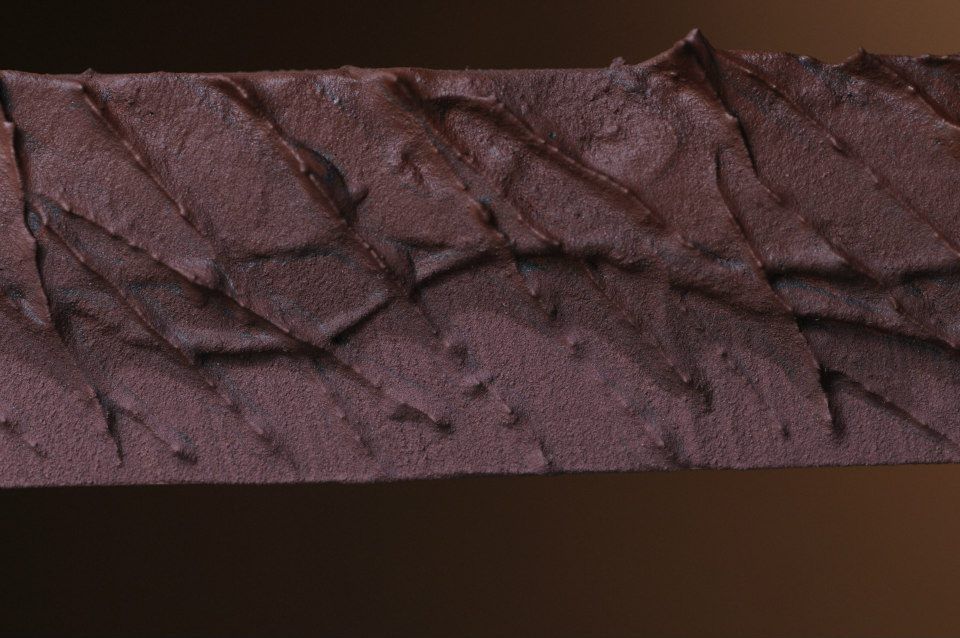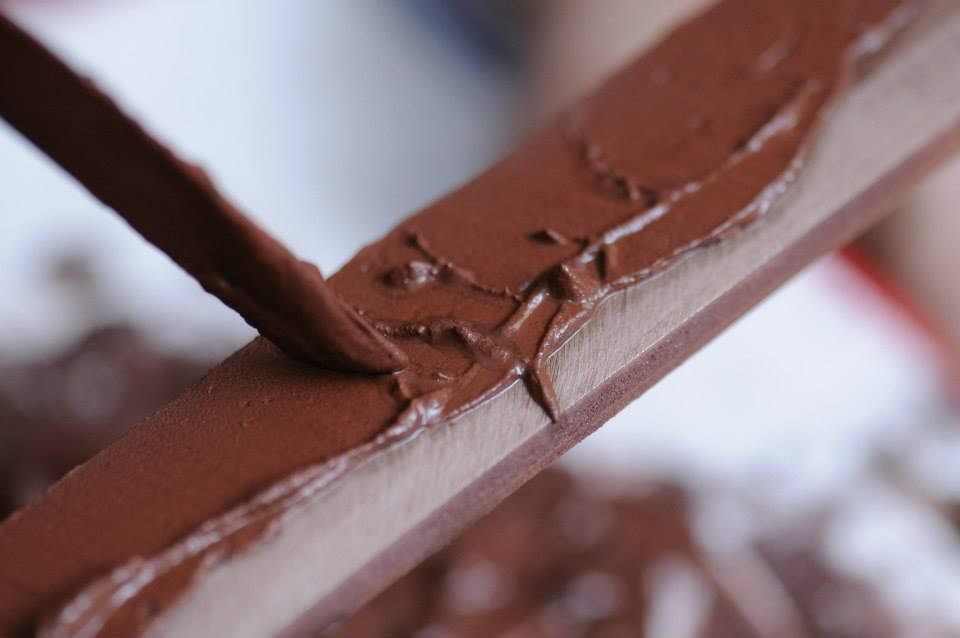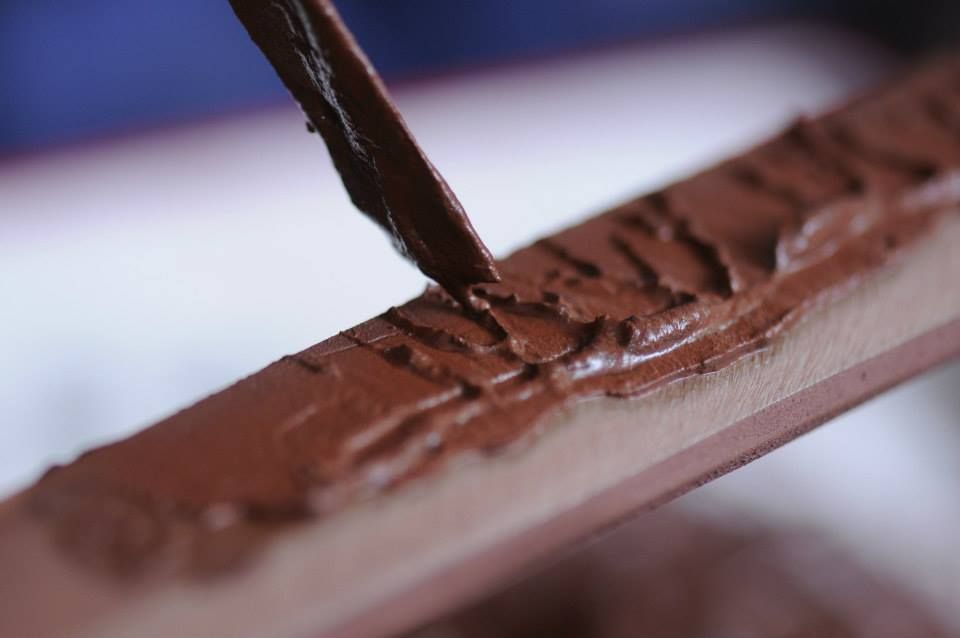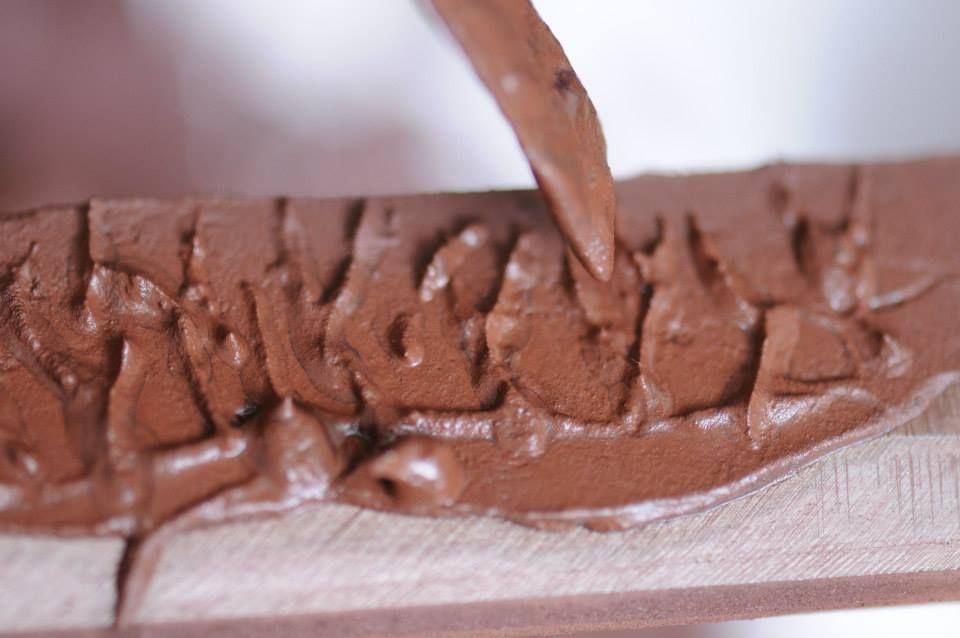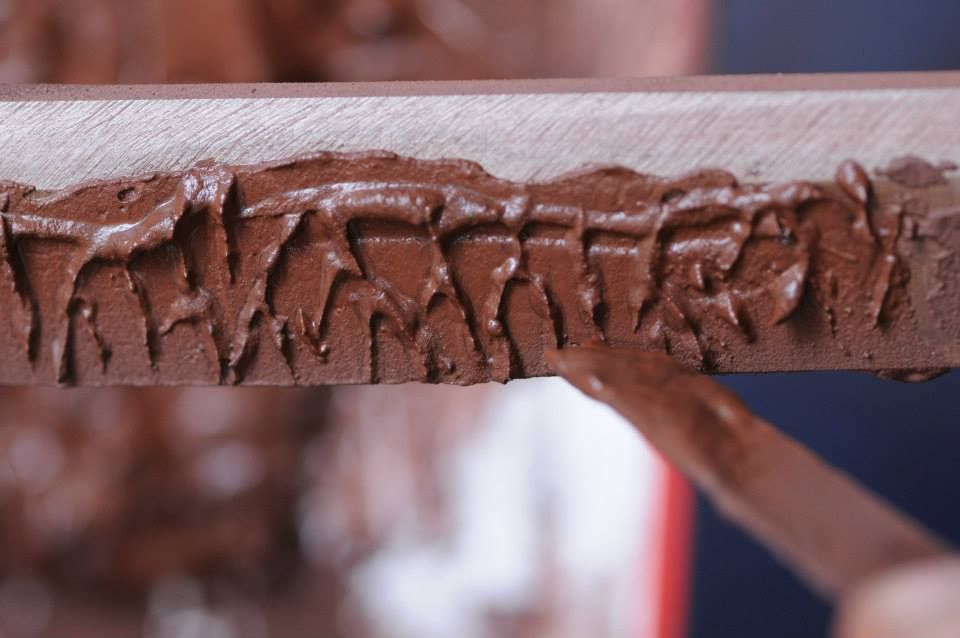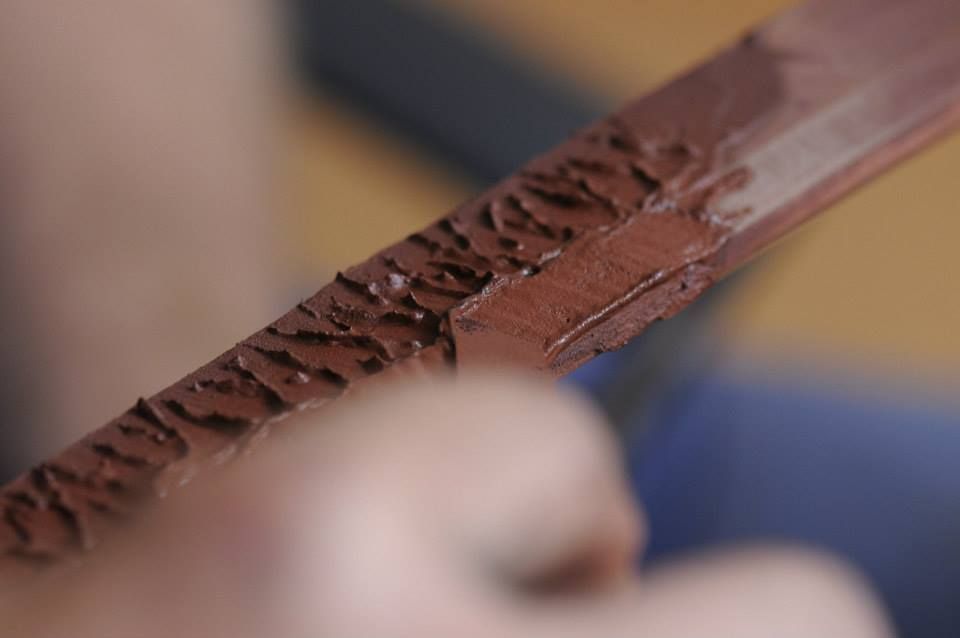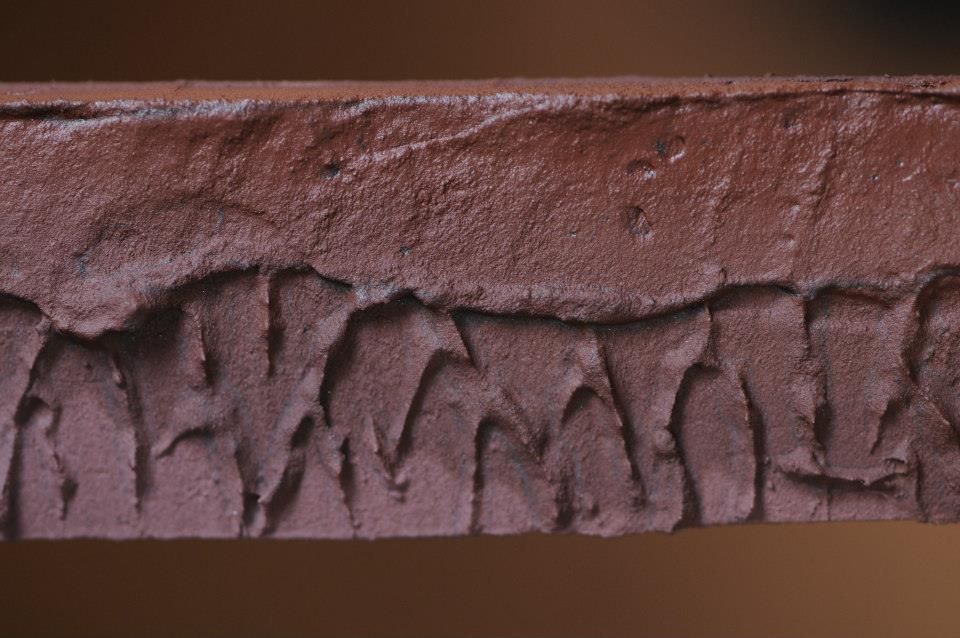Japanese sword hardening
Pavel Bolf
Blade hardening is one of the most important technological steps in the Japanese sword making process. One could say, with a bit of exaggeration, that the blade becomes a Japanese sword only after hardening.
Tempering is specific and typical of Japanese swords. It is done on the so-called HAMON. HAMON is the cloudy area of the blade. By hardening only the edge and its surroundings, the blade acquires its special characteristics. The hard edge can be sharpened very well. The disadvantage is its susceptibility to breakage. The unhardened and therefore softer rest of the blade gives the sword flexibility and resistance to breakage.
There are two ways to achieve this effect. The first is typical of my favourite school, the ICHIMONJI. When hardening, no covering paste is used to define the height and shape of the hamon. The blade is heated so that the temperature required to form the HAMON line is reached only in the area of the blade. In other parts of the blade, the temperature required for changes in the steel structure is not reached. The amount and type of hardening is thus dependent on the swordsmith's ability to prepare steel capable of responding to hardening in the desired manner and to create the most precise conditions for the formation of a balanced HAMON line during hardening. Its form is influenced by many factors. The essential ones are the hardening temperature reached, the height of heating of the cutting edge to the hardening temperature and the length of heating. In this way, different types of HAMON can be achieved. From the straight line of SUGUHA, through the wavy MIDARE to the typical CHÓJI. Usually other accompanying hardening marks are also present in this type of hardening, especially UTSURI.
The second method uses a hardening paste. It is used to delineate and define the blade hardening. The covering paste in a thicker layer prevents the access of the cooling medium when the blade is hardened. This significantly slows down the otherwise rapid cooling of the blade. The area of the blade that is only covered with a very thin layer of paste, on the other hand, cools very rapidly, creating a hard blade structure. The way the paste is applied also affects the height and shape of the HAMON line. It is the art of the swordsmith to achieve the desired shape of the cloudy line in this way. The application of the paste alone does not guarantee the desired result. Higher temperatures during hardening can affect the shape of the line and change it completely from what is expected.
Hardening paste
The exact composition of the hardening paste is the secret of every swordsmith. However, it is based on fine sand, crushed charcoal, clay and water. The solid ingredients are mixed in a roughly 1:1:1 ratio. A portion of ground chalk can be added to create ASHI. This stiffens the paste and allows for a more distinctive ASHI to be formed. The paste has a lower viscosity due to the addition of chalk and does not tend to settle after application.
Blade preparation
The surfaces of the blade where the paste will be applied should be worked with a coarse file. It is also possible to use a coarse shaping stone used to fine-tune the shape of the blade. In this case it is better to use a stone with a harder hardness and coarser grain. The surfaces should not be touched after machining. This is due to the risk of transferring grease to the surface, which prevents the paste from adhering firmly to the blade surface. On fleshy and otherwise dirty blades the paste does not adhere well during heating and often falls off. The blade edge is left blunt before hardening. The width of the blade is about 1,5-2 mm. This reduces the risk of HAGIRE cracks.
Applying the paste
The paste is applied in three steps. The first is to cover the blade area with a very thin layer of paste. It is only a few tenths of a mm thick. It is applied with a thin steel spatula. During the application of this layer, it is already possible to create the basic HAMON shape line, for example by creating larger waves. The thickness of the layer can rise continuously under the SHINOGI rib to a thickness of approximately 0.5mm. This smooth transition reduces the stress differences in the steel between the cloudy and uncloudy parts and reduces the risk of cracking. This method of paste application is particularly suitable for the MIDARE base pattern. This pattern has a high risk of cracks following the lower arc of the waves when cloudy.
The second step is to create ASHI or apply a thicker layer over the unclouded part of the sword. These two steps can be done in any order.
The ASHI is created using a steel spatula shaped like a knife. The edge of the spatula is dipped into the prepared mixture and then the adhering paste is transferred to the blade. If chalk is added to the mixture, a higher ASHI with a firmer texture is produced. This increases the pattern coding effect. Underneath the higher layer of paste forming ASHI, the steel is clouded more slowly and thus the hardness and colour of the steel underneath changes. By creating different ASHI patterns, the corresponding HAMON pattern is also created. Some HAMON patterns cannot be created with ASHI and must be precisely defined by applying a thicker layer of paste. These are for example the high GUNOME schools of MINO.
After the paste is applied, it is threadable to let the clay on the blade dry slowly. After the paste has dried, the hardening of the blade follows.
Hardening is a process in which the blade is heated to the desired temperature and cooled rapidly by immersion in water. Heating is done in a charcoal furnace. It is best to use smaller pieces of charcoal for hardening.
The blade is heated by drawing the burning charcoal through it. It is important to heat the blade evenly along its entire length. Different blade temperatures in different parts of the blade would affect the final shape of the HAMON. If the pattern is to be balanced, it is essential that the temperature be the same throughout the length. The swordmaker determines the temperature only by the color of the steel. For this reason, hardening is done in a darkened room. The length of heating also has a significant effect on the final result. When heating for a long time, the contrast of the pattern created by the ASHI application is lost. Long heating also prevents the formation of UTSURI. It also affects the form of the NIOI. With long heating, the NIOI is wider and the NIE particles are also formed to a greater extent. However, the formation of specific effects is also influenced by the way the steel is processed experience can vary greatly from swordsmith to swordsmith. I usually work without the use of paste and only use the HAMON line coding technique on about 10% of my work.
UTSURI
Utsuri is an effect typical for swords of the KOTO period (ca.1600). It is almost a common effect in quality swords of the Kamakura period. UTSURI manifests as a shadow over the Hamon line. It can take the form of a darker line, or it can have its own activity in the form of reflective particles. There are many types of utsuri.
I believe it is a secondary effect of hardening. It can be created by either method of quenching. Both with and without the use of paste. UTSURI is a manifestation of the steel's sensitivity, i.e. its ability to react to quenching and form different crystalline structures depending on the temperature reached. So it also depends on the swordsmith's ability to prepare such steel.
A short heating during hardening, when different temperatures are reached in different bands and the temperature increases gradually from the back to the edge, results in a pronounced UTSURI. The more pronounced the temperature bands, the more pronounced the UTSURI. When hardening with paste, the same principle applies. In my experience, paste limits the formation of NIE UTSURI and this usually takes the form of a dark shadow. However, this is not always the rule. Very sensitive steel is capable of forming NIE UTSURI even when using paste.
When long heating during quenching, where the same temperature is reached throughout the blade profile, UTSURI will not usually form. In this case, it is only the applied paste that defines the formation of distinct metallurgical structures during quenching by preventing the heated steel from coming into contact with water. The quality of the paste application and its ability to stay on the blade during heating and clouding is critical here. In addition to the swordsmith's skill in applying the paste, the ability to determine from the colour of the steel the exact heat suitable for hardening is also essential.
KOSHIBA
KOSHIBA is a metallurgical effect found on high quality blades of the 12th-13th Century. It appears above the beginning of hardening as a cloud of reflective particles. I have not had the opportunity to study many blades with this effect. However, I have been able to create it in a few cases. I believe that it is again a secondary manifestation of hardening, the formation of which depends on the way the blade is heated during hardening and the ability of the steel to produce it.
Change of blade shape during hardening
When the heated blade is plunged into water, the blade curvature changes sharply. Immediately after plunging, the blade bends sharply upwards. During the cooling process, which lasts for a few seconds, the blade gradually bends back down. The sword must therefore be prepared by experience before hardening to a shape that will achieve the desired SORI bend after the curvature changes during hardening. If the desired or uniform curvature is not achieved, it can be changed after hardening. However, the blade must first be tempered to a temperature of approx. 250 °C to reduce the stress in the steel. Without tempering, the blade is brittle and prone to cracking under subsequent loading. Tempering also reduces the hardness of the HAMON. A HAMON that is too hard is more prone to buckling or cracking.
Changes to the shape of the buckling are made in two ways. Small deflections can be increased by locally heating the spine on a hot copper block and then cooling it. The blade is inserted with its back into a groove in the hot copper block, from which it takes up the temperature. When the steel begins to turn blue, it is removed from the block and cooled rapidly in water. By repeating this process, the deflection of the blade can be increased.
Conversely, too much deflection is regulated with a hammer. By striking the SHINOGI-JI area, the material is stretched and the deflection is reduced. For this purpose, a special hammer with a transverse nose is used to increase the effectiveness of the blows for straightening the blade. In this way, the blade deflection can be adjusted by several centimetres. Provided, of course, that the previous processing has produced a high-quality and durable blade that will not crack during such an operation.
Risks during hardening, formation of defects
There are only a few possibilities for hardening defects. However, some of them are fatal. The most famous defect is HAGIRE. It is a transverse crack in the blade. Unfortunately, this defect completely devalues the blade.
A horizontal crack with the axis of the blade can also occur. It is often at or just above the HAMON line. This defect is often only superficial and will partially or completely disappear during subsequent grinding of the blade and shaping of the NIKU. I believe that its cause is too high a temperature during hardening. It also occurs as a result of repeated hardening of the blade. It is not as fatal a defect as HAGIRE.
A much more serious defect is an arcuate crack copying the HAMON. It often occurs at the tip in the transition to the KAERI . It is deep. If you put pressure on such a tip, there is a risk of breaking it off.
Another defect is the HADA WARE. During hardening, due to the dynamic process and the stresses to which the material is subjected, the imperfectly processed layer may loosen or open. It depends on the size and location of the defect. If the layer is not open and not located in the cutting edge, it is more of an aesthetic defect.
A fracture is an air bubble sealed between layers of steel. This defect is caused when the steel is recoated. However, it may not become apparent until hardening. When heated and then cooled, a rapid change in temperature can cause the air between the layers to expand and displace the bubble. This may only be visible as a shiny hard spot in the JI after polishing. However, the bubble wall may also rupture, again depending on the size and location of the defect.
Blade shape deformation. In addition to a change in deflection, lateral deformation can also occur with clouding. This can be caused by uneven heating of the blade, but also, for example, by the blade core being off axis. If the sheath steel is weaker on one side, this can lead to sideways bending of the blade. However, if the hardening has been carried out correctly, it is possible to straighten a blade that has been deformed in this way by cold hammering or using levers.
Conclusion
I am a student of Japanese sword and metallurgical effects technology. Most of my knowledge was gained through my own practice. Therefore, it does not always have to match the knowledge of other swordsmiths or people involved in theory. I am mainly interested in the study of KOTO swords, especially swords from the late HEIAN and KAMAKURA periods. My favorites are the MOKUSA and ICHIMONJI schools. This has a major influence on my perception of the hardening process. I believe that the approach of swordsmiths in the KOTO period was different from that of swordsmiths of later periods. There was a requirement for the creation of a perfect weapon during hardening and the manifestations of hardening were much more natural. The steel was given the opportunity to express itself naturally during hardening, without any attempt to restrain or bind it. The swordsmiths of the SHINTO period focused on creating the perfect HAMON line. The emphasis on the use of paste techniques increased. Techniques for creating precise and perfect patterns emerged and sword makers achieved incredible results in this area. Many of the old techniques were forgotten.
However, when we compare the natural KOTO style ICHIMONJI school of CHOJI and the CHOJI hamon created using paste coding, there are some differences. There are a few swordsmiths who, even with the paste technique, achieve excellent results and produce a beautiful CHÓJI pattern. However, the absence of distinctive secondary hardening effects such as UTSURI, KOSHIBA, naturally occurring TOBIYAKI and MUNEYAKI distinguish these modern works from the old ones. Swords without these features are like a perfect image of their predecessors. KOTO swords are a reminder of the skill of the old masters of the sword craft. They were able to create fantastic blades using minimal resources, which are an unmatched model for us today.
Translated with www.DeepL.com
